Overall thoughts on FCM 2016
This was an amazing few days. Â It was very much like UBCM in that it was jam packed with information that was useful to take ‘home’. FCM does not have quite as much direct access to Ministers of government as UBCM but what it lacks there, it gains in intensity of the sessions it puts on, the variety of the study tours that were available, and the vast number of people both the 1000+ municipal attendees but also very knowledgeable FCM staff, that you meet and network with and end up discussing, sharing and even commiserating with throughout the stay. Â I also thought the trade show was much more useful than UBCM (which was almost exclusively LNG focused) and my only complaint of the entire 4 days was that of those 4 days I only had the opportunity to walk the dozens of booth on the trade show floor for about 1 hour and have about 5 conversations with booths of interest. Â I could have easily spent an entire day just in the trade show.
When people ask whether it is “worth it” to go to these conferences that is what I will point to.  While 4 days seems like a long time, because of the sheer variety of the speeches, policy, sessions, and study tours, there is actually a very limited amount that one person can accomplish and thus gain value from.  Between Mayor Ruttan, Councillor McLeman and myself, we all went to different workshops or tours (except for two instances I believe) so that we could all get back together and at least share notes.  (including this blog).  Even between the 3 of us, we were not able to cover all the possibilities.  There were also many CAOs there with their Council members as much of the information is relevant to City Staff as much as it is to Council.
The more we can attend these, and the more people we can have there, the more value we get from them. Â It is a wonderful opportunity that can pay dividends to the City.
Below is the full report, enjoy.
11PM Wednesday Bags packed
Well, it’s time once again to pack some bags and suits and head off to do my best to represent the City of Port Alberni, learn some new things, connect with other elected officials, and write this blog as I go.
The conference is a gathering of municipalities from across Canada. It is like UBCM but focused on the federal rather than provincial sphere.
FCM is responsible for distributing many grants to local government and also provides support to municipalities as well as being a place where municipalities can lobby the federal government for new or renewed money, legislation or regulation.
You can see more at www.fcm.ca.
On the Agenda
I will detail some more in later blog posts but here is a quick look at the program. It starts Friday morning with a Keynote from Prime Minister Trudeau and is jam packed all day! Â I will be going to the Active Transportation Study Tour and Urban Forest Tour.
7AM Friday.
Up early this morning to get on the big bus!
There is a shuttle that goes to all the hotels to pick up delegates. Â There are over a thousand so I expect this bus to fill up fast.
I will be registering today as I didn’t get a chance last night and then the event opens at 8AM and Prime Minister Trudeau speak at 9AM!
Here are some Winnipeg pictures taken last evening at the Legislature and the Forks.
9AMÂ Friday – The Speakers and Prime Minister Trudeau

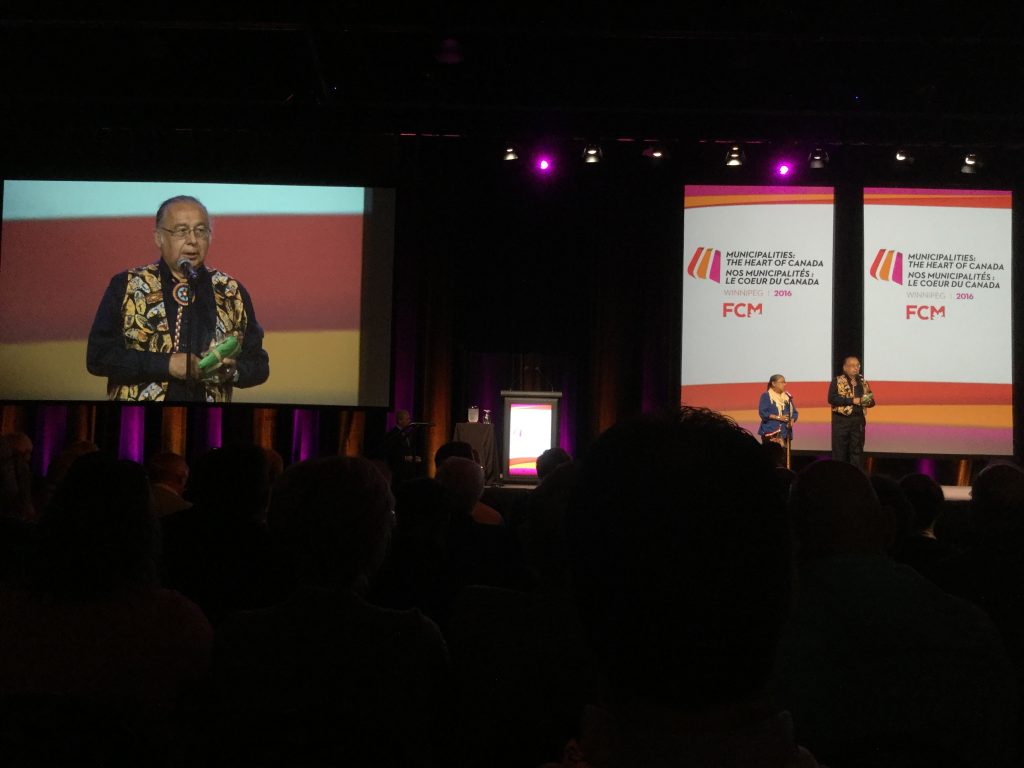
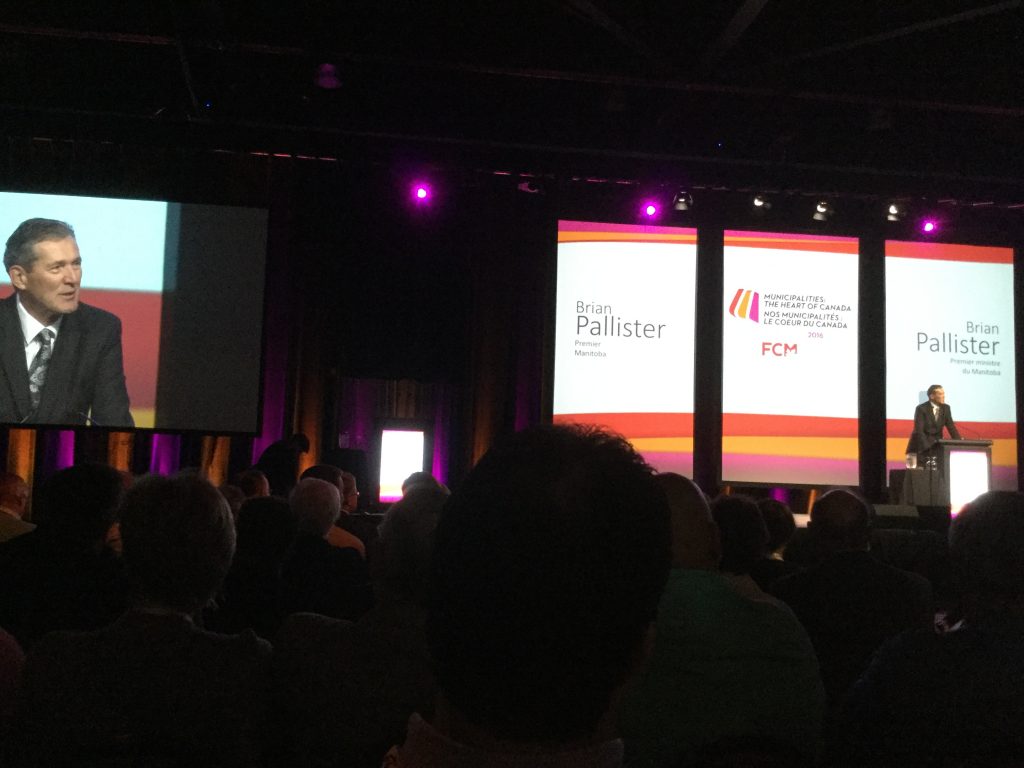
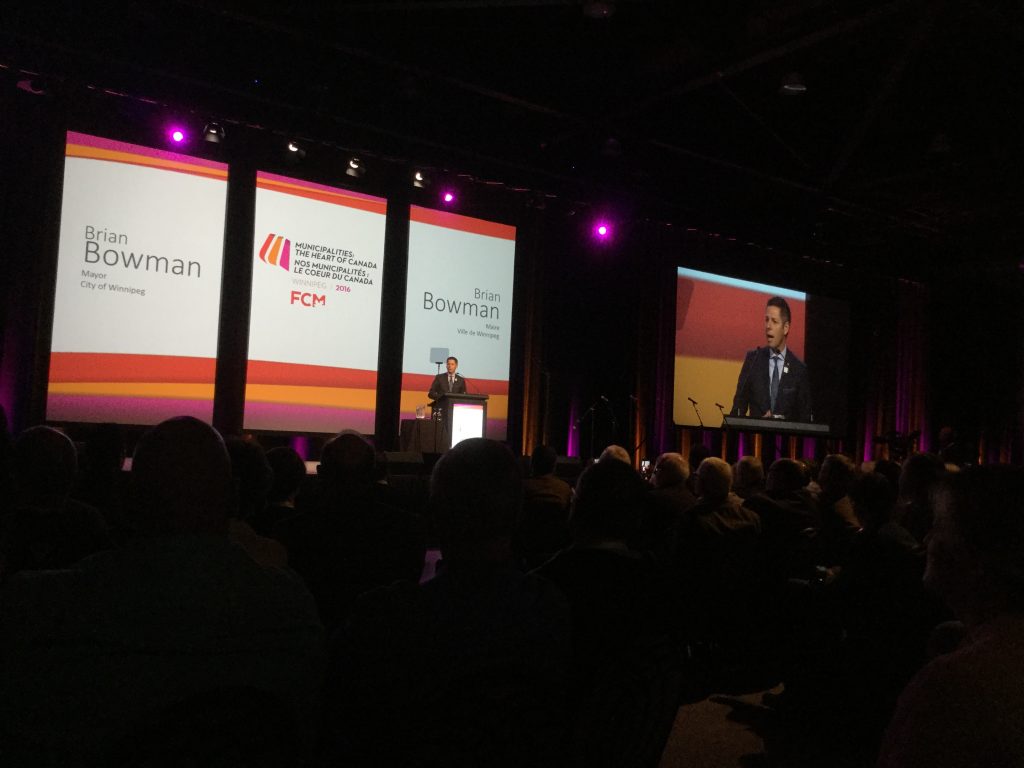

10:00AM Friday – First Workshop
WORKSHOP: Digital Disruption and the Survival of Neighbourhood Retail (Presented by Yellow Pages)
20% retailers dont have a website even though 80% of consumers are going online. 50% retailers dont feel they have online competition.
Here is a live poll they just did (by text!) in the room! Wow! (Click for larger).
First is Councillor from vancouver
I chose the bottom, D, our main street is in decline and not connected.
“You don’t get to choose the disaster, you do get to choose the revolution.”
Digital is the same as roads. Need a plan.  Vancouver was the first to have a digital strategy. Tech sector employs 75,000 in city of vancouver. 90,000 by 2019. Cleantech has grown in 8% in 3 years. Telus building is greenest building in NOrth America.  Driven by policy. Telus has created a gigabit connection for city due to digital strategy.
4000 jobs in Vancouver not filled in coding. The digital world is not the hardest to move digital, the hardest is local retail. Not just ‘having a website’, also about marketing.
Example: Tiny french store in Paris, handmade fashion, $2 million in sales online.
Winnipeg ECDev Prez.
“Local Frequency” App has a loyalty points program for multiple winnipeg business. Adds automatic points and can redeem at participating shops. “Local retail zones” can collaborate both as community event holding places and to connect in digital world. Local retailers can also be digital innovators.
Final is Councillor from Toronto chair of TO EcDev committee
Need to talk to businesses and help them, lead them into the digital age. Businesses have access to the world without changing their business model. Â Some local business are resisting change to some of new technology that would help them be sustainable and healthy. There is a “digital gap”. That is something that Yellow Pagea and other tech sectors can help with.
If you are not online and have information available about your business (both as a city and as a indivdual entity) you are missing out on huge market and the default behaviour of people now. Toronto is partnering with Shopify, Google and others to digitize main street to help in small business areas/zones in the city.
It is far more competitive environment now. Collaborating businesses in one area on mainstreet can multiply number of people attracted to that are. (1+2=8).
Local elected officials now must be much more involved with local business in leading and promoting and supporting mainstreet. Not just passing resolutions and regulations. Your Mainstreet is Your responsibility. This medium and device is the digital transformation. It is the key to retail.
Q/A- have to show them the opportunities.
What do you want to do about it. Don’t focus on competition of Amazon. Focus on massive world opportunity market for your tiny business. You are only 100-10,000 people in your city. Â But some will not be able to do so so have to focus on their niche and make their niche accessible to the public.
Digital local currencies are growing very fast.
Small biz incubators: Winnipeg Innovator Alley – used run down buildings and zoned them specific for tech sector.
Education is the key. – Winnipeg Public high school has mandatory coding and is winning awards in security and others.
12PM Friday – Active Transportation –
Most was created in 2010 under stimulus plan and is now part of regular road maintenance program, about 5% of the total road budget. Many facilities were controversial including an audit during an election (found not enough public consultation – but was successful).
Active Transportation Study was done 10 years ago and was followed up by an Implementation plan in 2007 that was then funded in 2010 with $25 Million Stimulus.
Walk and Bike Portal on Winnipeg.ca
All ages and Abilities – encouraging everyone, walking, cycling and all. Most people are concerned about safety. Protected, and off street and better connections to transportation.
Active transport is in strategy for all road renewal. 28 maps.
Hey are now working on a strategy to imrpove cycling in winter. Demand is there. Â They take plastic bollards out in winter so they are not plowed out.
Below is their first facility – Painted bikelane. The travelling lanes were reduced. 1.5m bike :: 3.5m for truck and bus. Residents – wanted more safety.
Protection plan is based on Best Practice. Downtown 200m is within protected lane. Outside is 400m to protected.
“If you build it they will come”
Assiniboine. – cost – $700-$800,000 for a km.
So it is about 5% of the road budget. (5 million on 100 million). Goal is to separate users with bike paths beside walkong paths/sidewalks.
1 million Per km now.
Buffered bikelane on 35-40,000 car a day road. Will be 11km long.
FIrst protected lane, grew cycling 25% a year for first 3 years.
we started with sharrows and painted lanes. Now listening to feedback and Will have over 80km of protected lanes.
the impact from moving from bike lanes to protected. There js always perceived concerns about moving away parking.
We are not designing for commuters we are designing for people. (8-80) not discouraging vehicles. Strategies is based on Equity – not equality – people get what they require to travel where they require by method of their choice.
we have to do the strategies together.
Slow and gentle pressure.
DoT of Massachusets is best practice right now.
we are seeing disability users too.
Poly post and buffered lane was easier because there were many accesses (residential)Â
Flagship street (below) is parking protected. 2ft buffer, no issue with parking lanes or dooring
Public engagement Is hard
Across Canada is the same. Active Transport is always controversial to start. Registered Letters – to ensure all can say they were consulted. – Talk to those registered letters FIRST.  Then do a public popup event and online feedback. You must engage widely, not just the lobby group.
“Tire talks” on the street to consult with existing users. (Do it in the afternoon). Have to make it about everyone, bikes, pedestrians, emergency, and car/truck.
In Winnipeg sudden 2010 funding meant they did too many projects at once (35 in a year) due to limits on funding. Did contribute to controversy. That is where registered letters helped because could point and say it was consulted.  Has to be there to defend against NIMBYs. Ironclad process. Need political champions.
“Cyclists always break rules” is a very common complaint.  Only way to make easier is to have to a share the road and be nice to all strategy.
Talking about equity. Massive infrastructure (road/bridges etc) has no need for public consult. In time, active transport will be same. That is key reason for renewal road strategy including active transport.
2:30PM – PLENARY: President’s Forum: Thinking Local: How Municipalities are Leading on Climate Change (Sponsored by Cement Association of Canada)
I am stunned to hear one of the most Climate concious speeches ever from the president of the Cement Association of Canada.
We must measure the lifecycle GHG in our infrastructure. 100km diet. Resilience. That concept should be applied to municipalities. 100km construction diet. Wow. Of course – they are competing with Asphalt and Bitumen. Shrewd!
Check out the short clips below of some of the discussion. It was an excellent panel that included the Mayors of Iqaluit, Edmonton, Bromont (QC) and a director of the Pembina Institute.
Unfortunately in the clip below I just missed the Mayor referring to a nameless former Premier of Alberta who attributed climate change to “dinosaur flatulence”.
Great session.
4PM Friday -Â WORKSHOP: Mitigate or and Adapt! Infrastructure in the Age of Climate Change (Presented by Cement Association of Canada)
DESCRIPTION
Can historic investments in the renewal of municipal infrastructure balance the need to reduce GHGs while also helping our communities adapt to climate change? What do municipalities need to know about low carbon, climate resilient development? Come hear from experts and practitioners how new innovative life cycle tools and decision making processes are helping municipalities close the divide between climate mitigation and adaptation and leverage infrastructure investments to build better, lower carbon and climate resilient communities. Speakers:
• Adam Auer, Director of Sustainability, Cement Association of Canada – Moderator
• Andrea Reimer, Councillor, City of Vancouver, BC – Panelist
• Megan Meaney, Director, ICLEI Canada – Panelist
• Jamie Meil, Research Principal, Athena Sustainable Materials Institute – Panelist
Three lifecycle changes:
#1 Must end practice of short term fixes to full sustainable planning
#2 Take climate as primary target and reward low carbon solutions
#3 Better integration of green and grey infrastructure
Jamie Mell
“Embodied Carbon” – Carbon that is implied in the actual built environment. That carbon matters. (When you built a concrete sidewalk, that has a footprint). Our national climate targets are in jeopardy. “Materials Matter”. We have to use evidence based decision making to build infrastructure with lighter footprint. “We need to bend the GHG emissions curve sharply down in order to meet targets.”
The Operating and Embodied carbon pie.
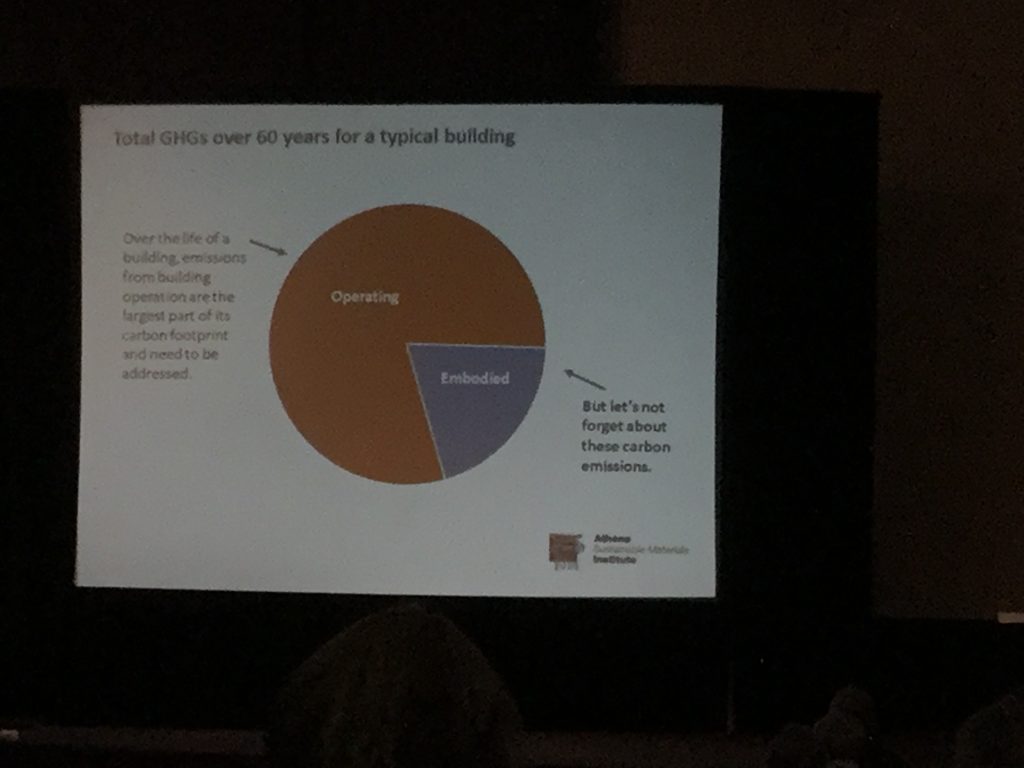  Annual 2.3 million megaton of carbon from non-residential construction alone, about 500,000 cars. Embodied carbon is very significant and front end loaded.
 Annual 2.3 million megaton of carbon from non-residential construction alone, about 500,000 cars. Embodied carbon is very significant and front end loaded.
We are good at building more efficient operating building. But we forget about the embodied carbon at beginning.  Reduce and optimize material use, eliminate some or all parking garage, balconies, unfinish concrete floor (polish). Use Portland limestone rayher than regular. Leave concrete exposed for thermal mass.
Councillor Reimer Vancouver
The policy framework for greenest city in North America
Red area represents 15% in assessment value of province of BC. Threatened by sea level rise.
150,000 trees planted. But poor implementation. Can’t count trunks. Better is to increase canopy cover.
9AM Saturday – Resolutions and Policy and Fort McMurray.
First resolution is on Homelessness Partnering Strategy.
RESOLVED, That the Federation of Canadian Municipalities urge the federal government to:ï‚·
ï‚·
Update the Homelessness Partnering Strategy “Designated Communities†eligibility list to reflect significant homelessness challenges faced by many communities not previously identified as having serious homelessness challenges;Increase funding for the Homelessness Partnering Strategy to account for new communities added to the program;
Amend the funding criteria to consider a broad range of factors including community capacity and the specific needs of individuals who are homeless or at risk of homelessness; and
Renew and expand funding for the Homelessness Partnering Strategy with flexibility to fund a range of programs based on local needs, including support for a variety of strategies other than Housing First.
It passes (we vote electronically with a little remote control device.)
Second Resolution: National ORange Shirt Day
WHEREAS, Recommendation #80 in the Truth and Reconciliation summary report calls for “a National Day to honour survivors, their families and communities, and ensure that public commemoration of the history and legacy of residential schools remains a vital component of the reconciliation process”; and
WHEREAS, September 30th has been celebrated as Orange Shirt Day across Canada and beyond, as a day to commemorate the survivors of residential schools, to remember those who did not survive, and to reaffirm our commitment to ensuring a better future for all children; and
WHEREAS, The Assembly of First Nations, at their national conference in 2014, unanimously passed a resolution in support of Orange Shirt Day; therefore be it
RESOLVED, That FCM call upon the federal government to officially declare September 30th, National Orange Shirt Day, a national day to honour residential school survivors, their families and their communities, to ensure that public commemoration of the history and legacy of residential schools remains a vital component of the reconciliation process.
Resolutions passes.
Third Resolution: National Pharmacare Program
WHEREAS, The City of Vancouver has recognized and has demonstrated over the past years its commitment to the importance of healthy citizens as the foundation of a healthy, engaged and economically vibrant community; and
WHEREAS, The over 3 million Canadians, including many in our local communities, don’t take medicines prescribed by their doctors because they can’t afford them; and
WHEREAS, Canada is currently the ONLY country with a national medicare program that does not have a national pharmacare program; and
WHEREAS, The risk of having no insurance for medicines is high among lower income Canadians which includes the service industry, precarious working and seasonal workers; and
WHEREAS, The studies show that adding a national pharmacare program to our national health care system would lower costs to businesses by over $8 billion per year, providing Canadian companies competitive advantages in international trade; and
WHEREAS, The recent research confirms that these gains can be achieved with little or no increase in public investment; and
WHEREAS, Municipal government expenses for employee benefits would be significantly reduced by a national pharmacare program; and
WHEREAS, A national prescription drug formulary would support better quality prescribing, including reducing dangerous and inappropriate prescribing to Canadian seniors; and
WHEREAS, A National Pharmacare plan is a sound policy, both economically and socially, the City of Vancouver express its support for the creation of a National Pharmacare program as an extension of Canadian Medicare, since health and economic studies now show that such as policy would improve health in municipalities, give local businesses a competitive advantage in the global marketplace and lower costs for municipal government on taxpayers; therefore be it
RESOLVED, That FCM call on the federal government to work with the provinces and territories to develop and implement a National Pharmacare program.
Resolution had good debate. Â Some delegates felt this would take away from a priority on infrastructure funding and that pharmacare is not in our jurisdiction, others felt that healthcare is a direct impact on constituents and we represent them.
Fourth Resolution on Climate Change.
4. FCM Support for the Government of Canada’s Commitment to the COP21 Paris Climate Agreement
WHEREAS, It is well established that climate change is causing significant changes to the world’s climatic systems, increasing the frequency of extreme weather events and posing other risks, such as drought, forest fires and rising sea levels, and that these changes present serious threats to our natural environment, our health, our jobs and economy; and
WHEREAS, The Government of Canada committed to sign the Paris Climate Agreement at the 21st session of the Conference of Parties to the United Nations Framework Convention on Climate Change (COP21); and
WHEREAS, Local governments are essential to the successful implementation of the Paris Climate Agreement; and
WHEREAS, Toronto City Council has endorsed the Government of Canada’s commitment to the Paris Climate Agreement, which was supported by over 190 national governments, to limit global temperature increase to below 2 degrees Celsius and to pursue efforts to limit the global temperature increase to 1.5 degrees Celsius; and
WHEREAS, Toronto City Council is encouraging the Government of Canada to develop an action plan to meet the commitment made at COP21; therefore be it
RESOLVED, That the Federation of Canadian Municipalities (FCM) support the Government of Canada’s commitment to the COP21 Paris Climate Agreement; and be it further
RESOLVED, That FCM acknowledge the Paris Climate Agreement’s recognition of the need to limit global temperature increase to below 2 degrees Celsius and to pursue efforts to limit global temperature increase to 1.5 degrees Celsius, and to incorporate these goals into FCM’s policy and advocacy towards the federal government; and be it further
RESOLVED, That FCM call on the Government of Canada to develop policies and programs, in consultation with FCM and its member municipalities, that will support municipal efforts to reduce greenhouse gas (GHG) emissions at the local level consistent with the need to limit global temperature increase to below 2 degrees Celsius and to pursue efforts to limit global temperature increase to 1.5 degrees Celsius.
Long debate with some bringing up fraudulent anti-action advocate Patrick Moore but generally supportive.
That was the end of the Resolutions section.
We then had a section of time dedicated to a “Tribute to Fort McMurray” including a video that had pictures of the Slave Lake fire and the Calgary floods.
I am glad that we as a national body passed the climate change resolution that is just one of the ways we could help prevent more disasters like Fort McMurray in the future.
10:30AM Saturday – Rail Safety and new Guidelines.
The regulations for rail crossings are going to be updated and come into affect this November.
That means that all municipalities and other ‘road authorities’ will have to ensure that their rail crossings are up to the new standard. Â The presentation focused on what municipalities need to gather in terms of information to satisfy the requirements of the new guidelines so that plans can be made to make the necessary upgrades.
There is apparently going to be some money for these upgrades and the costs will presumably be shared at least in part with the railways (in our case Southern Rail of VI and the ICF) but there is great uncertainty about the final costs and there is a lot of concern about the downloading of both the planning and the infrastructure onto municipalities.
There is an inventory of crossing at Data portal Transport Canada that we will need to ensure is accurate.  It is comprehensive and includes Google Earth files that can be used to identify and measure crossings.
Check Road Design Speed and Classification.
*Identify sight lines*
Try to get the annual daily with road tubes
“Determining minim sightlines at grade crossings.
In our case we should have to work with BC Safety Authority. Â We will need to get together with BCSA and SCI/ICF to figure out what we need to do, including when it comes to trail crossings. Â Another good resource might be the city of Delta as they have already done much of the work and they work with Southern Rail in their municipality.
Next Proximity
Guidelines include 30m separation with berm. Separation can also be provided by design of building with noisy non habitable rooms on rail side. Guideline document was done on 2014.
No city in BC has adopted the guidelines yet. Will be updating the guidelines for new crossing regulations and elevated R.O.W.  If you have the right crossing with high quality arms and bells you can eliminate need for train whistling.
12:30PM Saturday – Urban Forest Tour
Tree Canada Urban forest – Winnipeg has one of the best urban forests in the Canada. Â The houses are beautiful (excuse the grid on the windows of the bus!) 🙂
8 million trees in Winnipeg inc. 236,000 American Elms – Provincial registration to acknowledge heritage trees. The band is for canker worm. BTK biological pesticide is used to control forest tent caterpillars.
Winnipeg has a chief forester! Really started with key to preserve trees along rivers edge. “TD green streets program” for some funding.
Biggest improvement in their studies with UofW was ensuring it is properly water.
In hardscape, the sidewalks have “silvacell” it also improves water and sewer issues. Brings in more water and is now used by engineering and public works. It is also very efficent for repair. Difference is about $10,000. But has massive improvement in life of trees. Rather than always replacing as they die back every year.
$2 Million in Capital – $5 Million in operating. About $8 per person in winnipeg.
Tree diversity guidelines. No more than 30% of one genus. Developed a list of possible trees. Also specifications on how to plant trees. All in development agreement parameters.
There is an inspection of all trees that are planted on a 2 year warranty. Must be inspected before City will take over maintenace.
There are tree removal guidelines.
Council of Tree Appraisals.
There is no bylaw on private property to protect tress, only on public and nature land.
“ITree tool” from American states… Need to find….
Manitoba and Ontario now have a pesticide ban. We donnot restrict fertilizer use but educate.
Something the Active Transportation folks said applies today and is worth repeating:
In Winnipeg: “Old Growth Trees are considered an asset.”
3:30PM Saturday – Winning the Youth Vote.
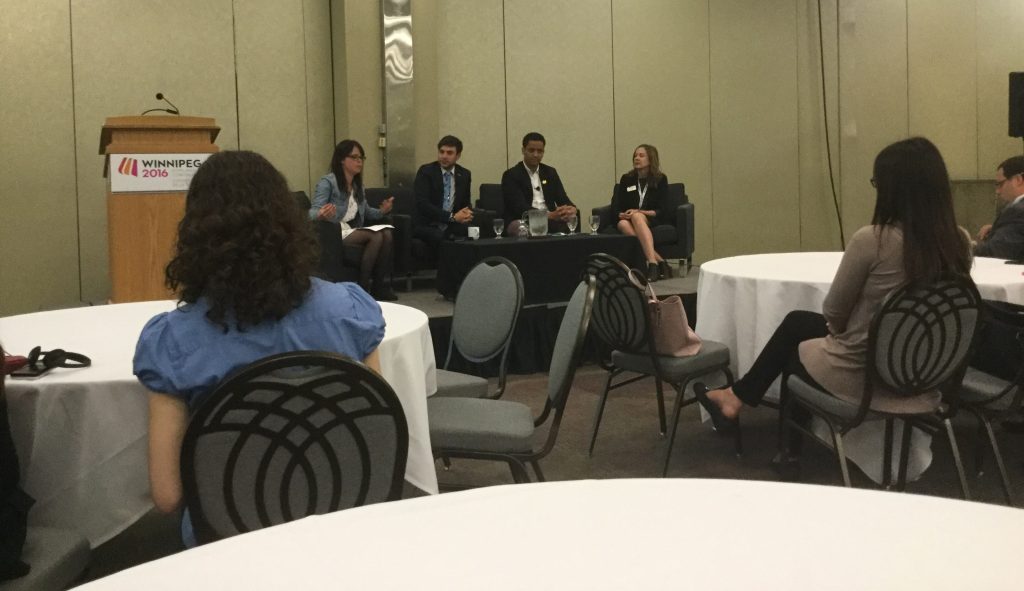
Speakers:
• Kristin Annable, Winnipeg Free Press – Moderator
• Xavier Léger, Councillor, City of Longueuil (QC) and member, Commission des jeunes élus et élues, Union des municipalités du Québec – Panelist
• Matthew Green, Councillor, City of Hamilton, ON – Moderator
• Lisa Holmes, Mayor, Town of Morinville, AB, and President, Alberta Urban Municipalities Association – Moderator
APATHY – How do you get youth to vote.
Lisa: reject the apathy moniker. You have to teach.
Matthew – Young people are targeted to be called apathetic even though all turnout is below 50%.
Xavier – it’s a movement – young are more informed. They can express themselves on many platforms. The larger cities are able to offer a living wage. Quebec is working to equalize payment. We should review salaries. It is a big job and you have to be dedicated to the job and be compensated for it.
Matthew: The system is ‘rigged’ in a way for retirees. People work, people get the time off but can’t use it. What about a national vote day holiday? If people want to serve, they can’t because they must
Anna: Every election day was a holiday in South Korea.
Lisa: We have to start young. Moreville has the Junior Mayor’s club. Grade 3. Grade 6 they have pins to be MLA.
Matthew – Millennials are looking for meaningful engagement. They are not interested in partisanship.
Xavier – We have to get youngs’ opinion and consult in school. Youth often talked about and are animated about social development. We have to be as inclusive as possible, not just focusing on youth but on all.
Lisa: all viewpoints have to be at the table and they shouldn’t be pidgeon holed into specific issues just because they are youth.
Xavier – it is important to have that variety of age and experience as well so that you can pass on how things.
Social Media – What happens when things go wrong and how do we protect against actions captured during our “young and stupid” days…
Xavier – whether we go into politics or not we have to be careful and education is key.
Mat: If something happens. Own it. Tell the truth.
Talking about the difficulties of family and politics and social media and how pubic families.
Other opinions:
Youth sometimes think facebook is the only platform they need. They might get used to just googling an answer and being informed but when you are asked in person you don’t know.
Seniors want to see you and talk to you. You still need to get people to support you. If you are not connected to your community you will not win.
A 16yr old girl attending from high school in Winnipeg asked what they need to do to be elected.
Answer from all: Do it now. Get involved and just do it. Don’t think it is down the road.
Saturday Evening with the Mayor
The days are long and packed and diverse so even though we have been here for a few days the three of us, Mike, Jack and I, have not had a lot of time together during or on the fringes of the conference so it was nice Saturday night to have a chance to have dinner with Mike and wife Bonnie. Â We had a nice (and reasonably priced as is much in Manitoba!) dinner at a French restaurant that sits on the incredible bridge that links Winnipeg and historic St. Boniface over the Assiniboine River with a view of where Louis Riel is buried.
Sunday Morning – FCM AGM, Mulcair  speech, Regional Elections
This morning is dedicated to holding the actual annual general meeting of the federation.  There are elections and appointments to the executive of this very important organization.
I won’t bore you with the details of the AGM since much of it was speeches and reports from the President, VPs, etc on the inner workings of the FCM itself.
The main event of the morning was a Speech by Thomas Mulcair.
It was predictable of course in its critique but he did share some good points and I thought was a far more effective expression than the “Official Opposition” representative Diane Watts of the Conservative caucus on Friday. Â The difference in attendance at the speeches was marked as well.
FCM Regional representations.
After the speech we had meetings of our provincial ‘caucuses’ to determine representatives from our province on the Committees and Boards of the FCM. Â There were 5 positions elected amongst the BC caucus members (based on attendance in the room) and 9 candidates.
Here is a picture of some of the candidates acting as scrutineers as the vote, which was done with a multiple-choice style automatic counter like our municipal elections, was calculated by FCM staff.
The five successful candidates, from all parts of BC, will be confirmed this afternoon by the full FCM delegate body.
Surprise! Pride Parade!
Right after our caucus meetings were done at Noon we were treated to seeing the #WPGPRIDE Parade roll past the convention centre in all its glory! Â It was very big, very loud, and really fun. Â It was great that it happened at the same time as FCM as there are many elected officials from small communities who have never experienced Pride parades or had the opportunity in their community. Â There were lots and lots of pictures being taken. These are only some of mine, the rest are on Facebook. 🙂
Sunday Gala.
After the final policy meeting after lunch I headed back to the hotel for an hour of rest and a change of clothes I headed back to the Convention Centre for the final event of the weekend.  The Gala hosted by the City of Winnipeg was absolutely stunning. The host cities of course use these conventions to try to get people to talk about the City and come back.  Well they pulled out all the stops Fred Penner (a Manitoba native), the Royal Winnipeg Ballet (which I only got audio of unfortunately), the Winnipeg Symphony Orchestra, an incredible dance troupe and fireworks, the City put on an unforgettable show.  Over the week, they showcased everything Winnipeg has to both in terms of lessons and ideas and resources for other municipalities follow and in terms of incredible natural, cultural and other assets.  My image of Winnipeg is forever changed.
Thank you Winnipeg, Migwiitch.





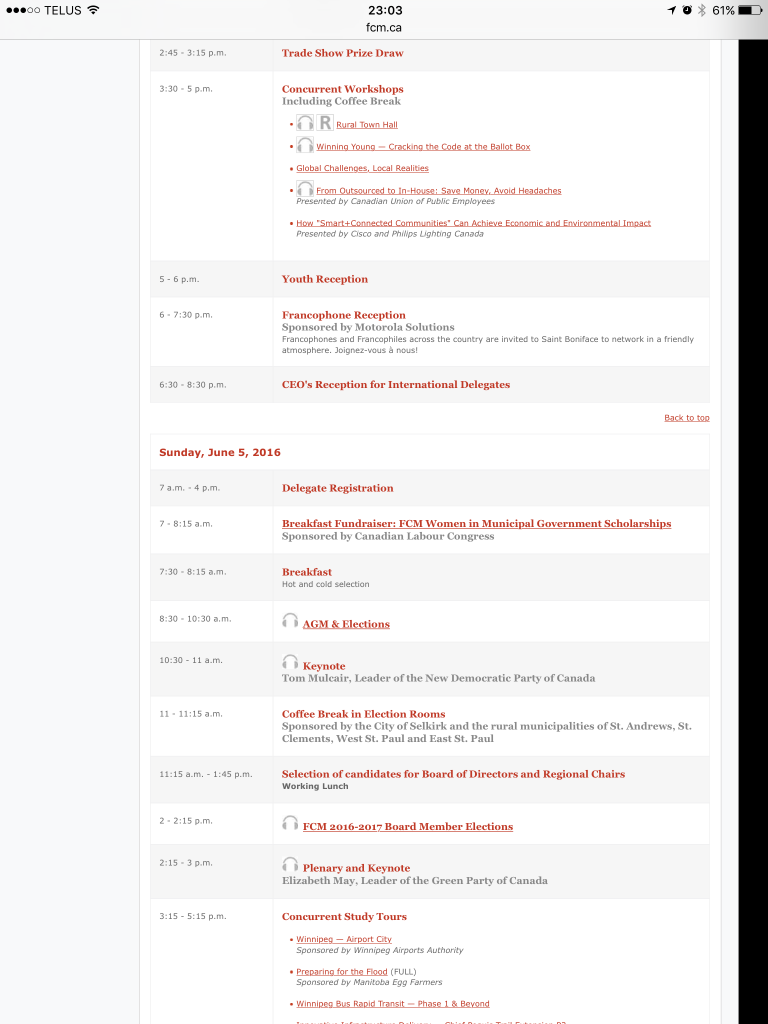
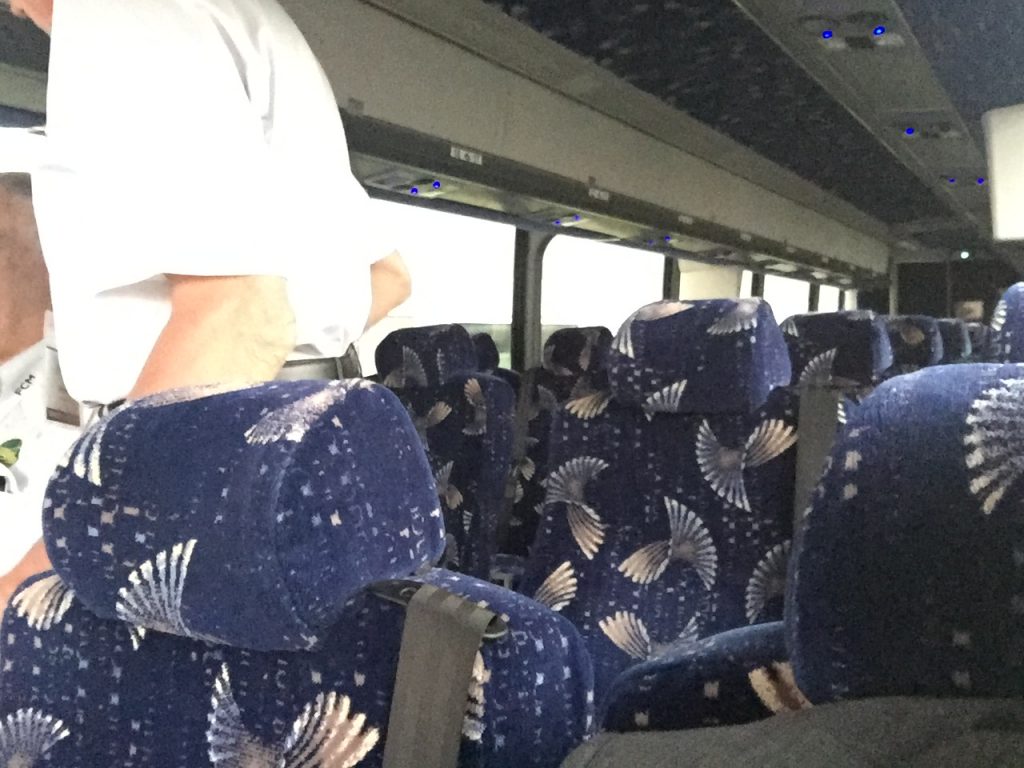


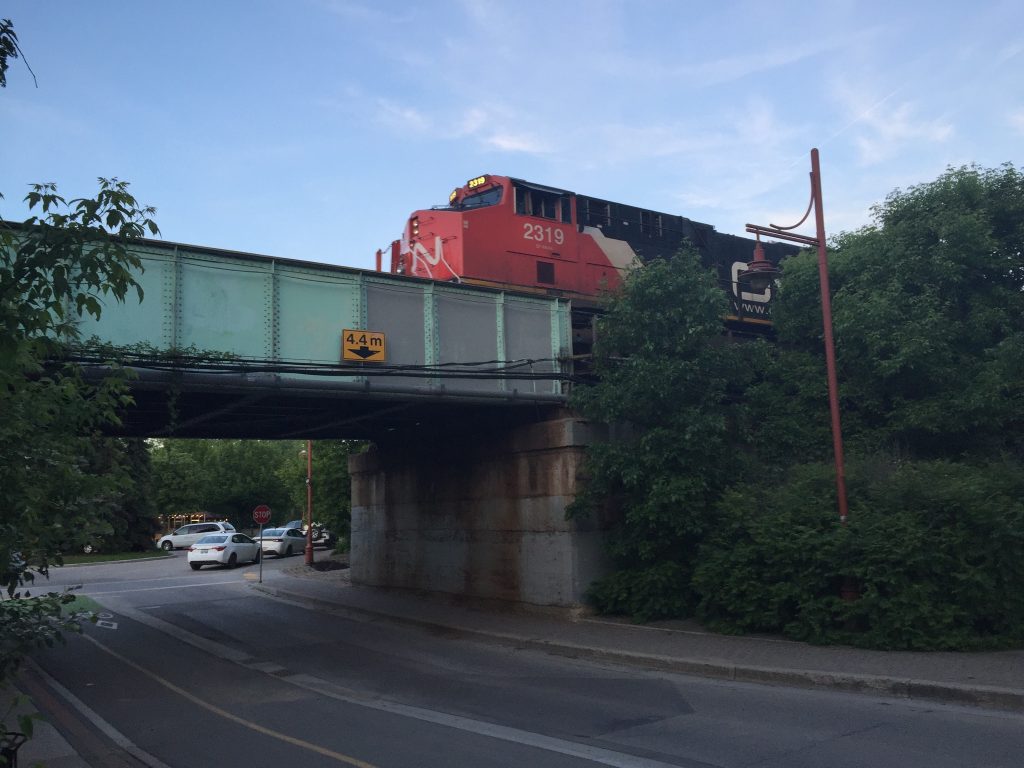
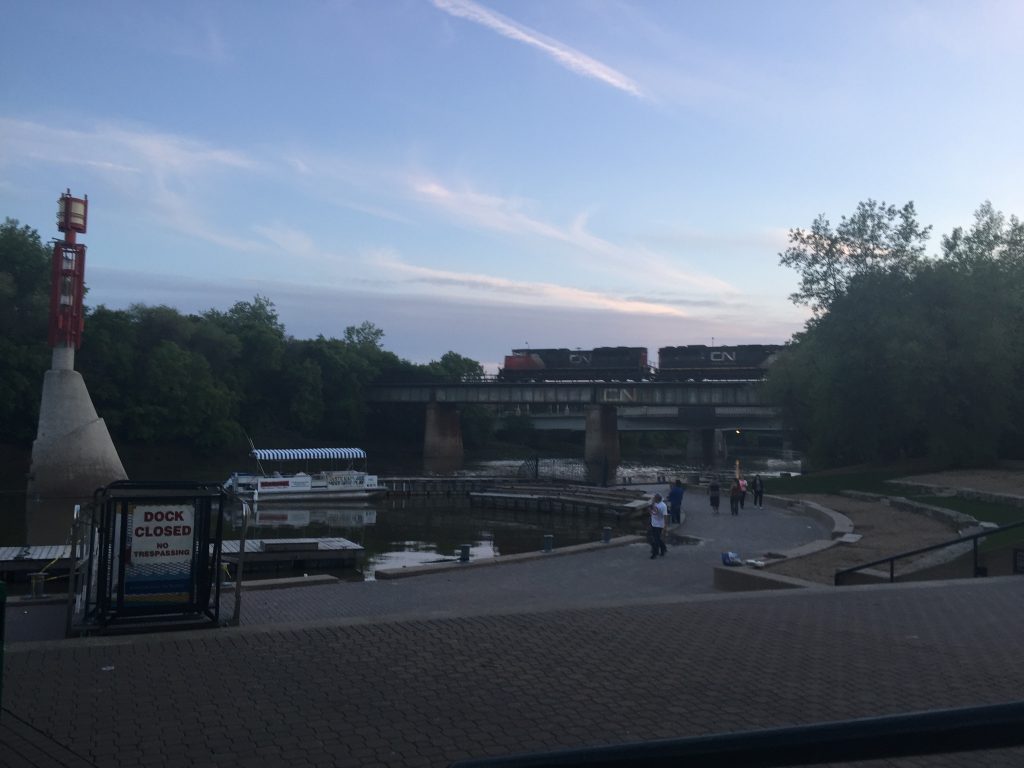
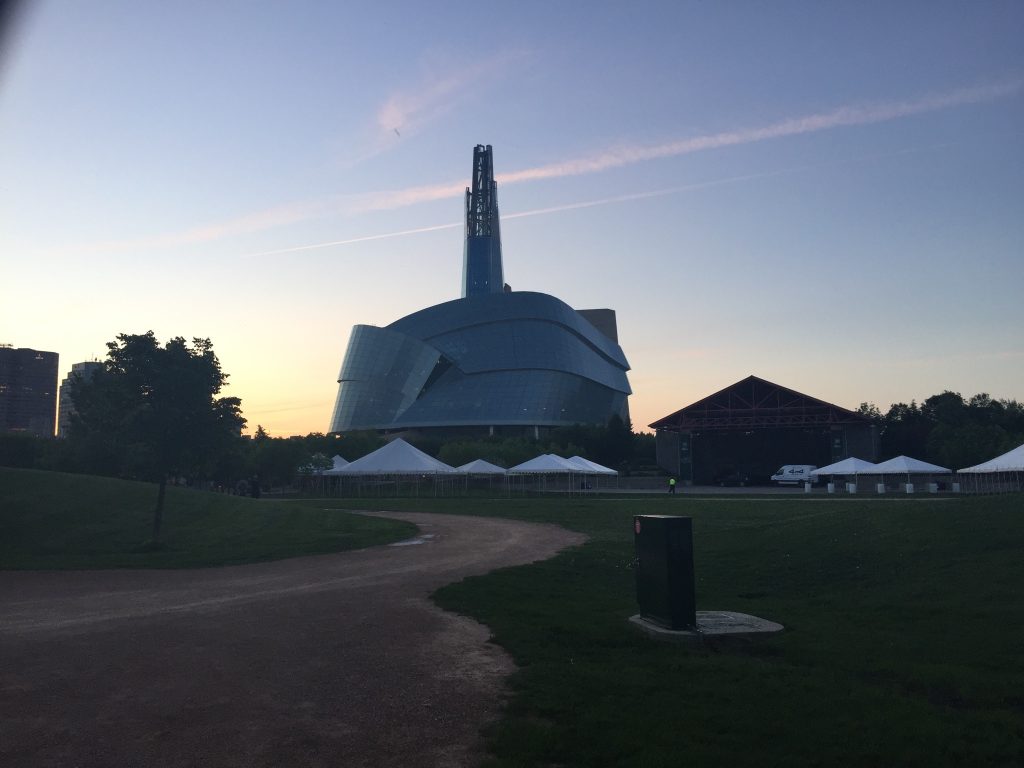
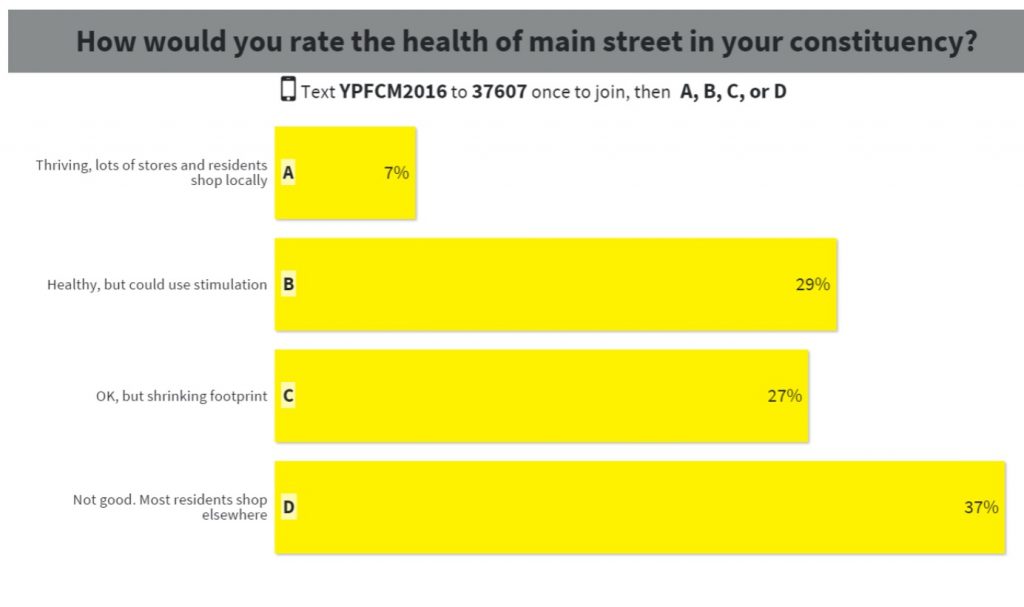

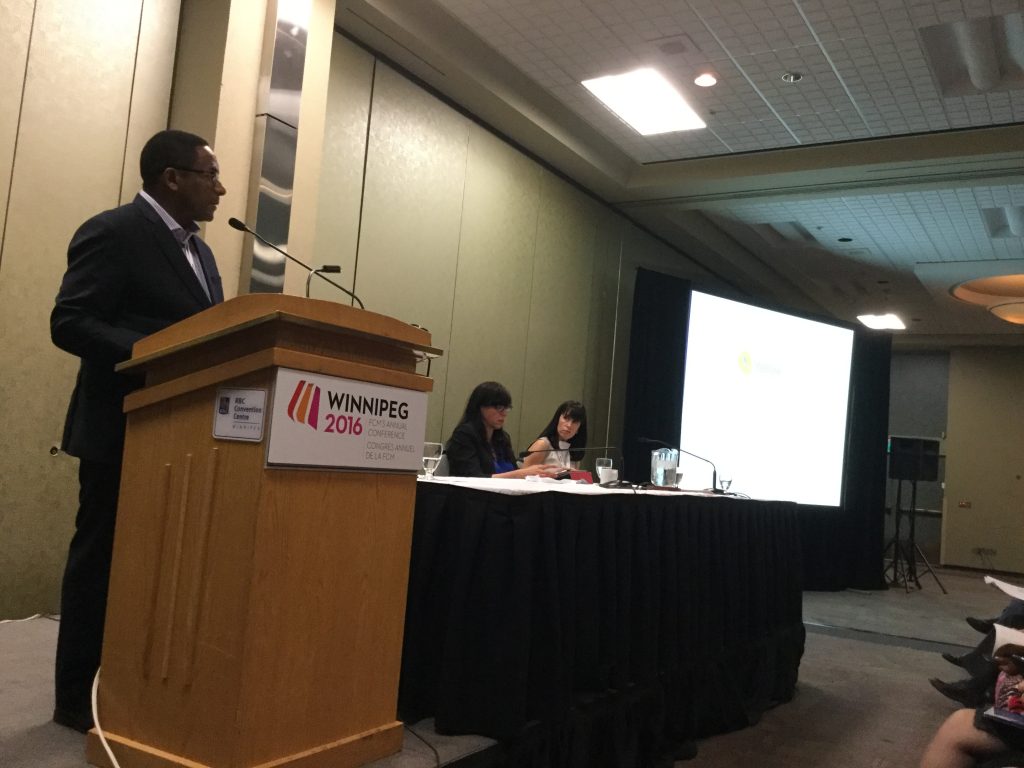
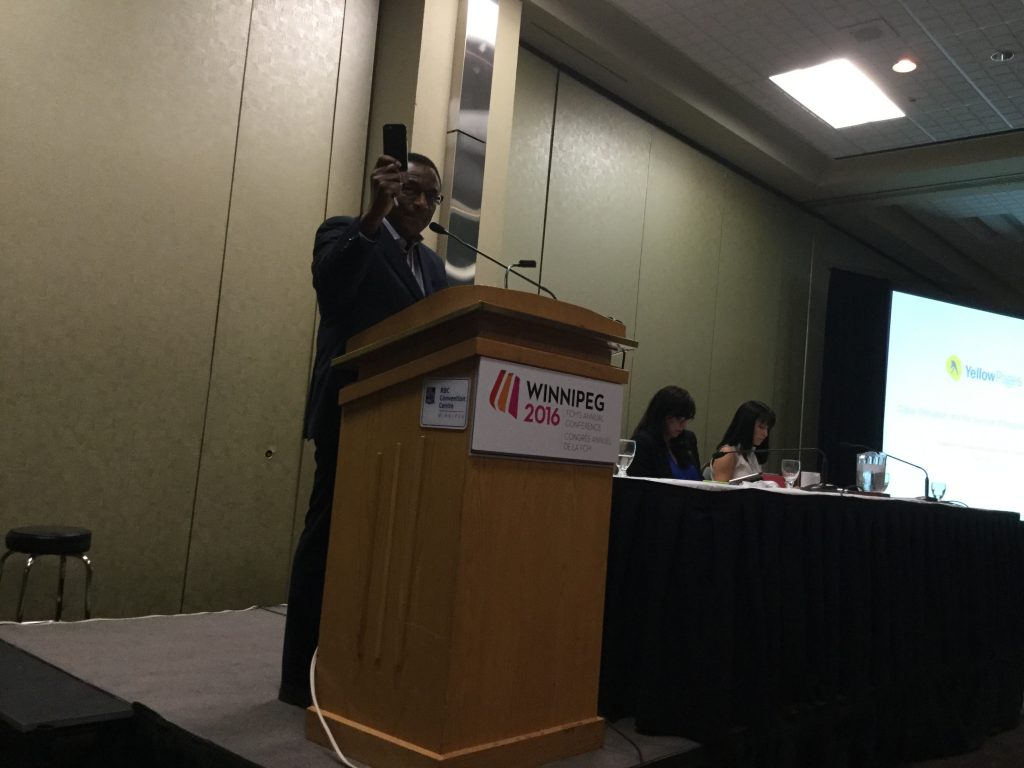
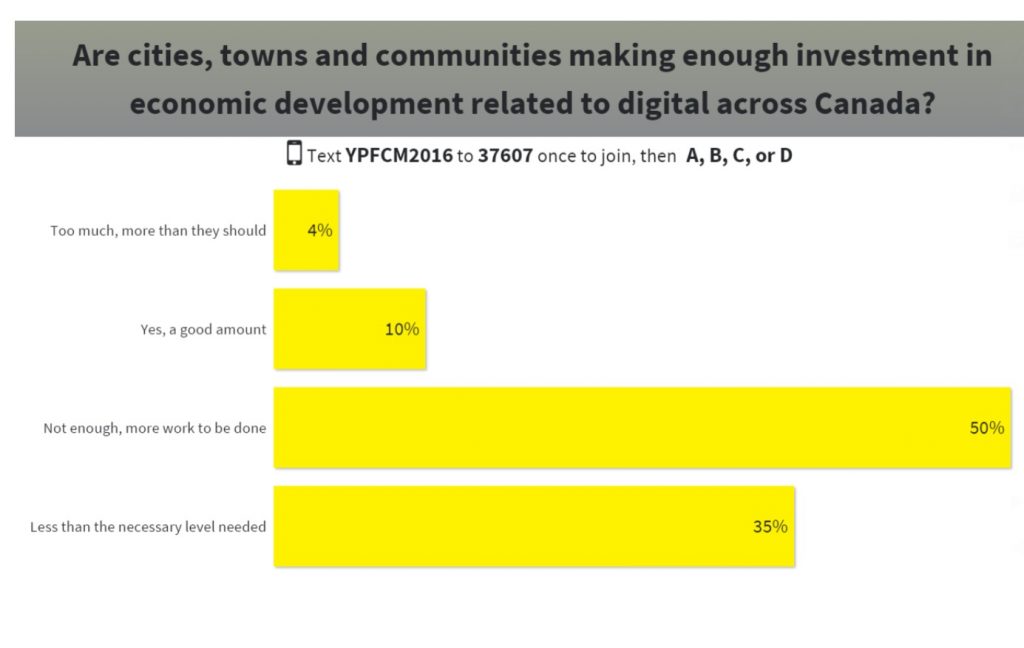
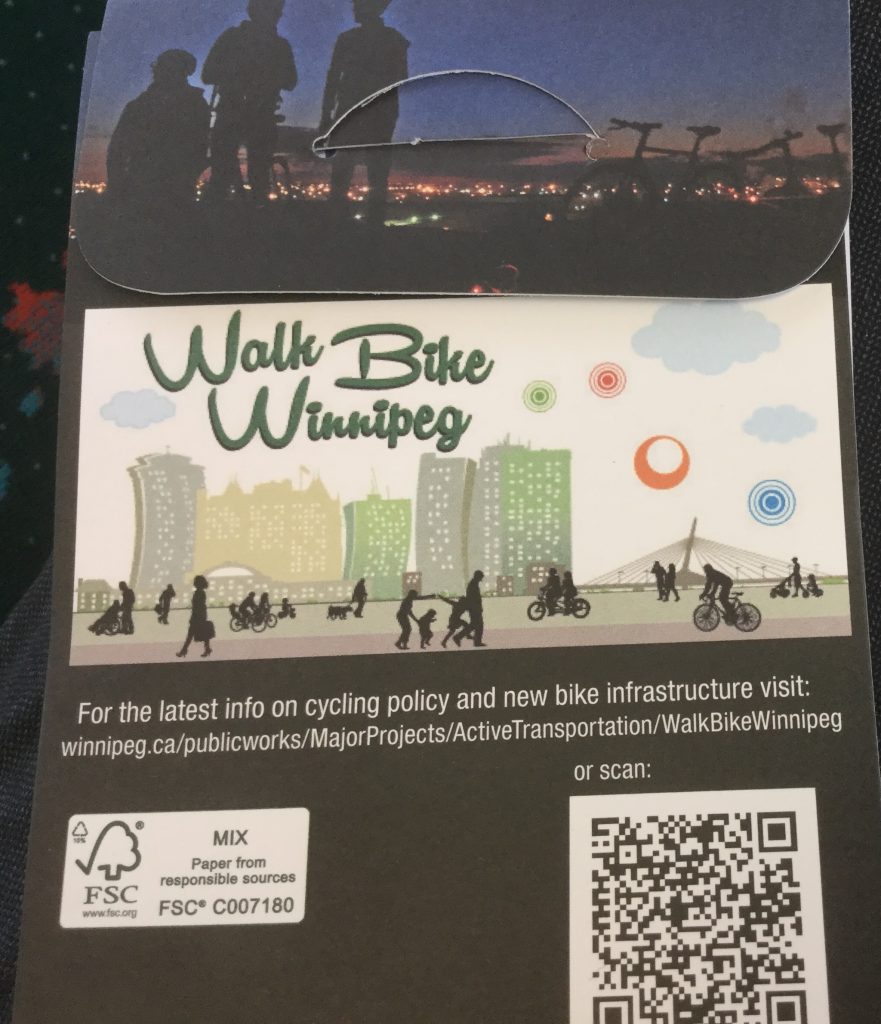

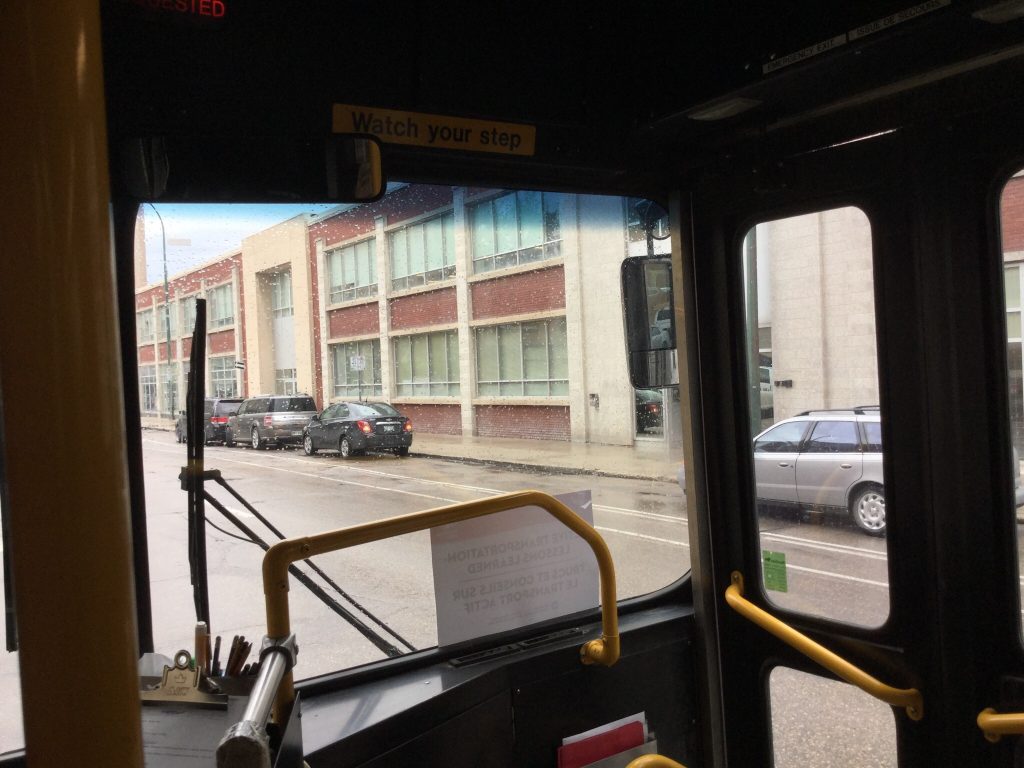
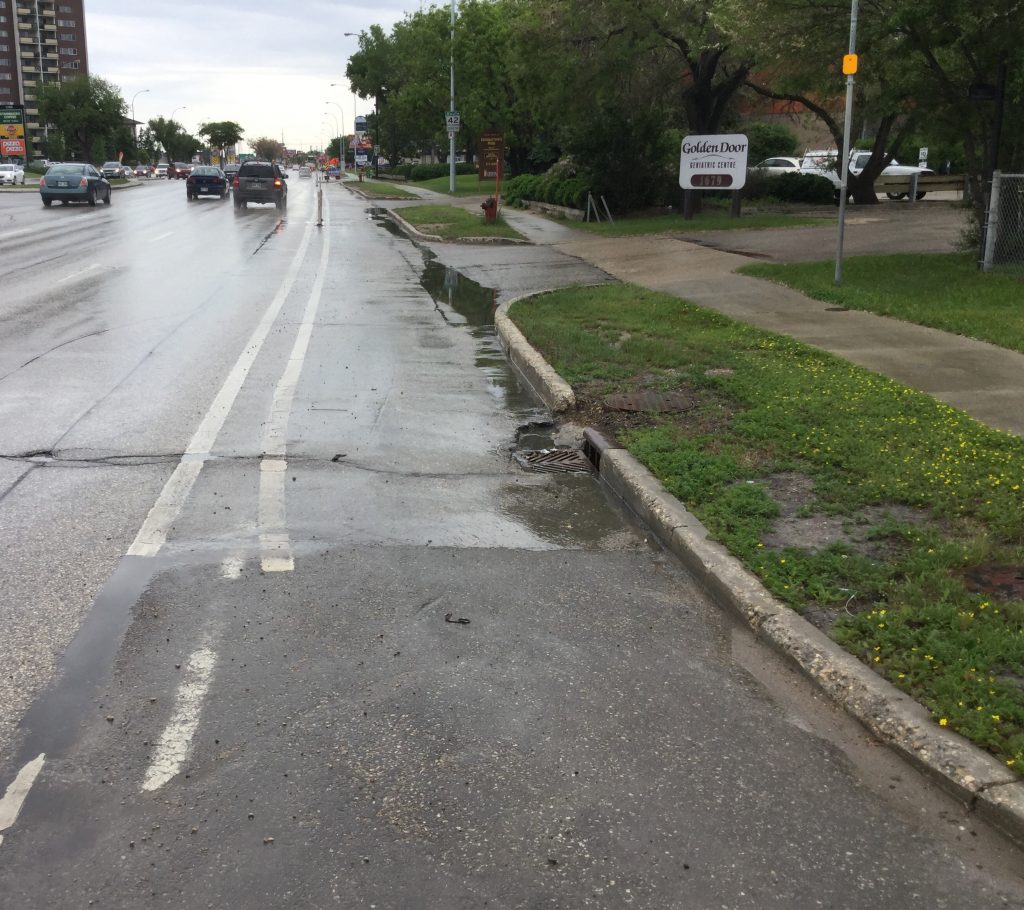
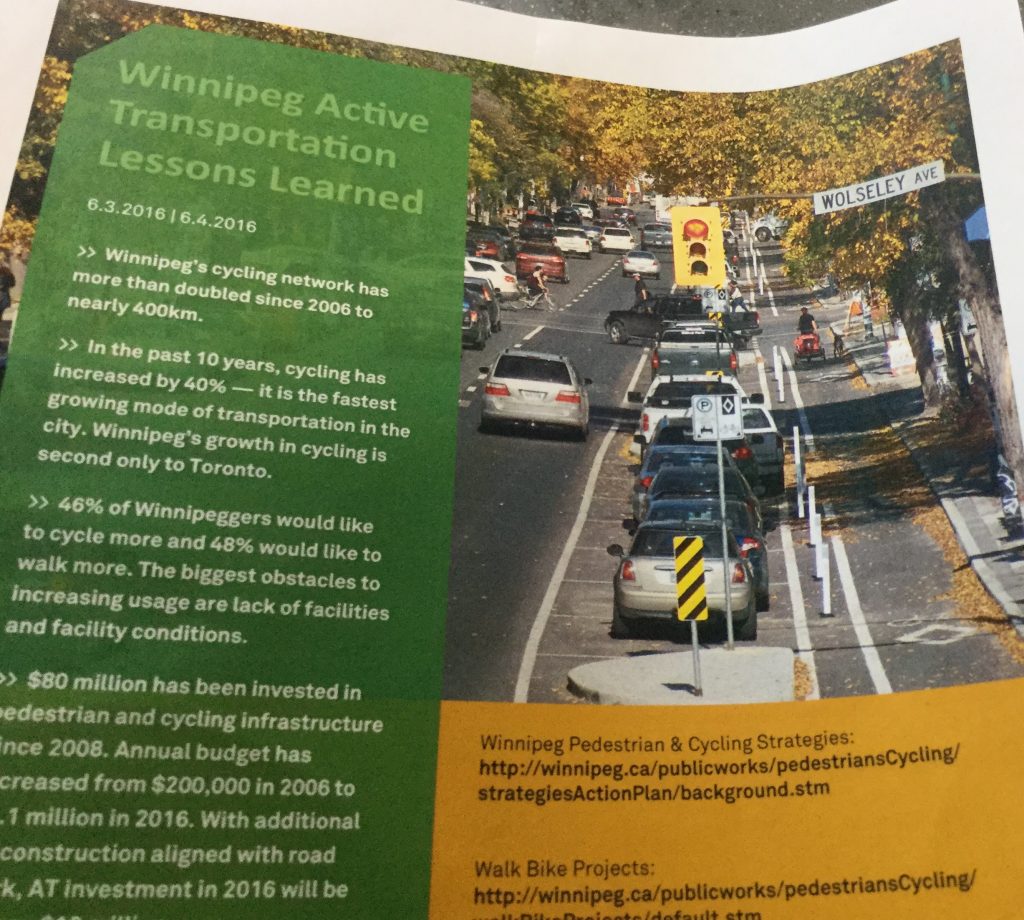
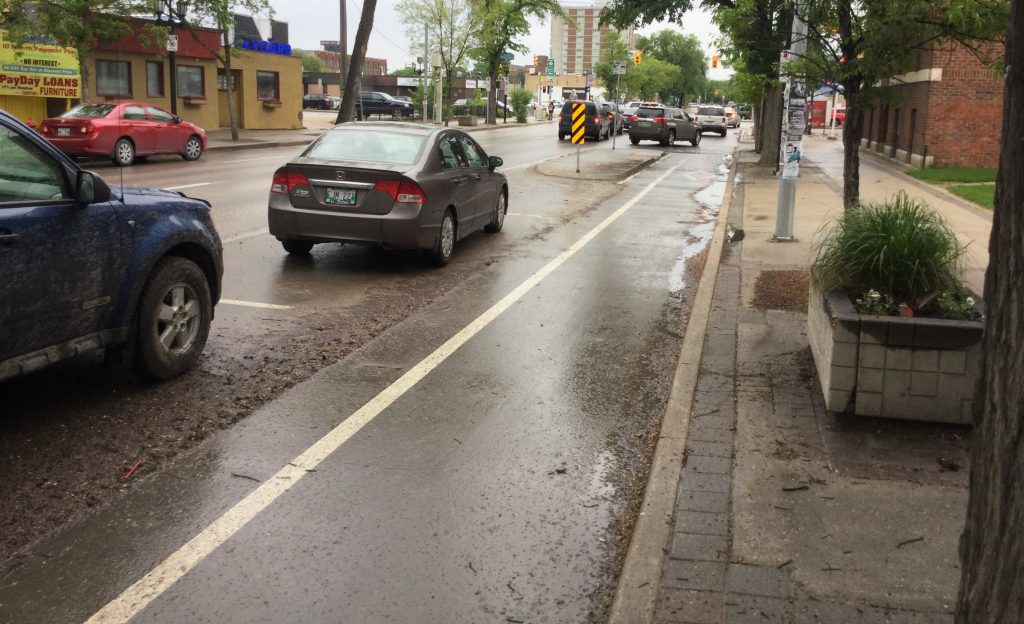
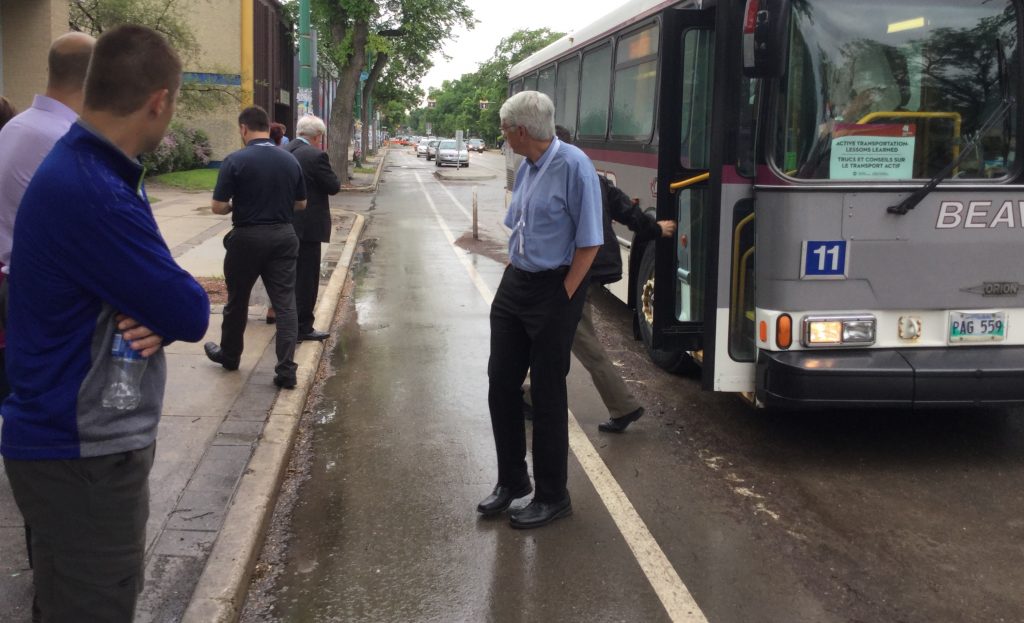
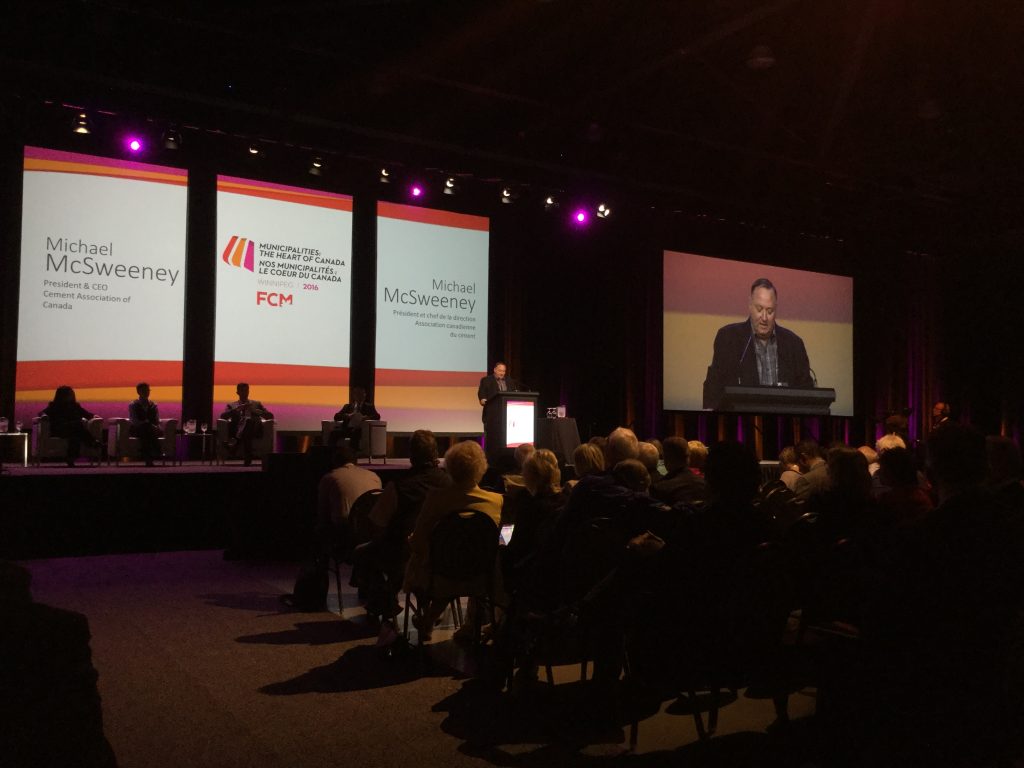

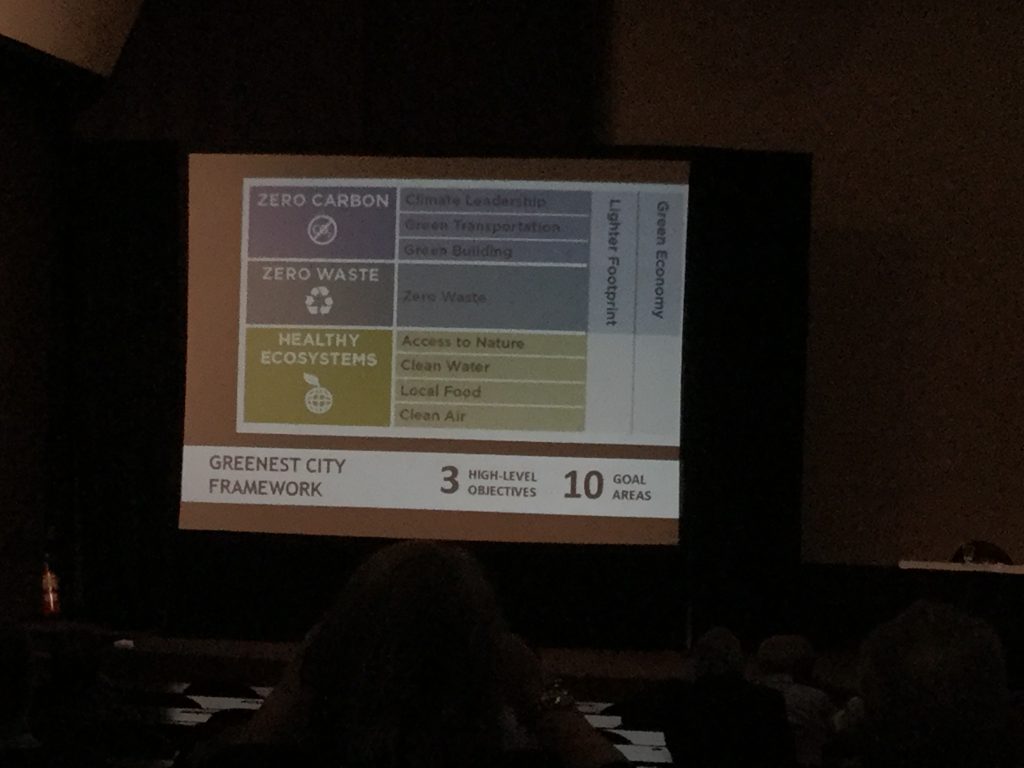
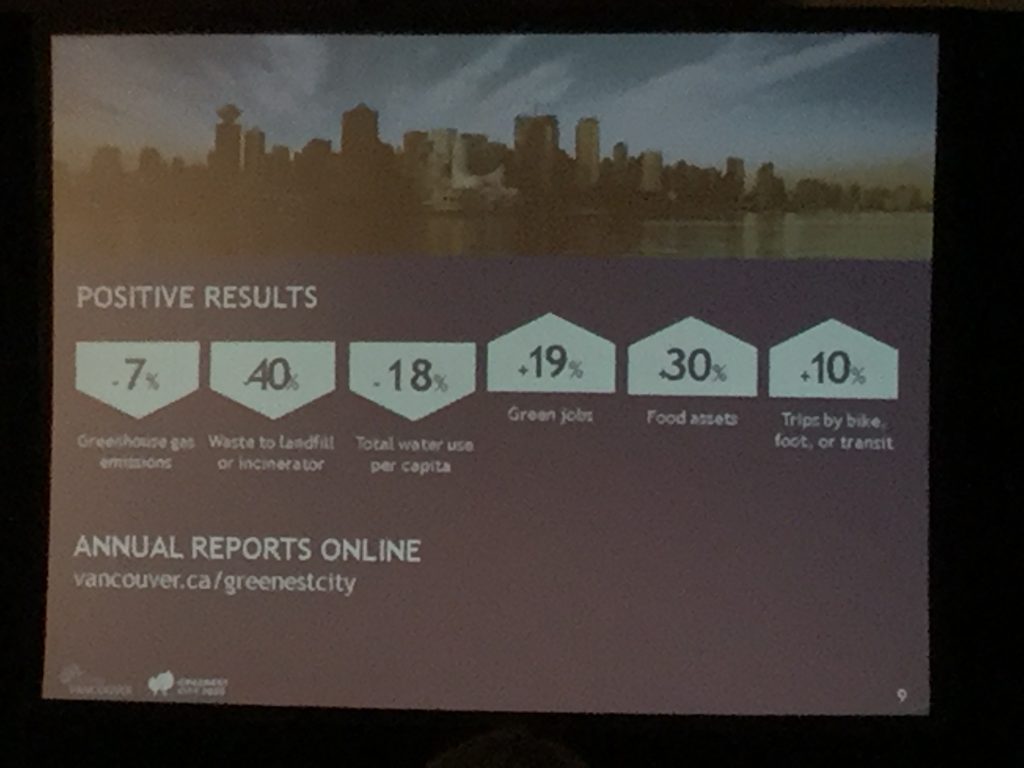
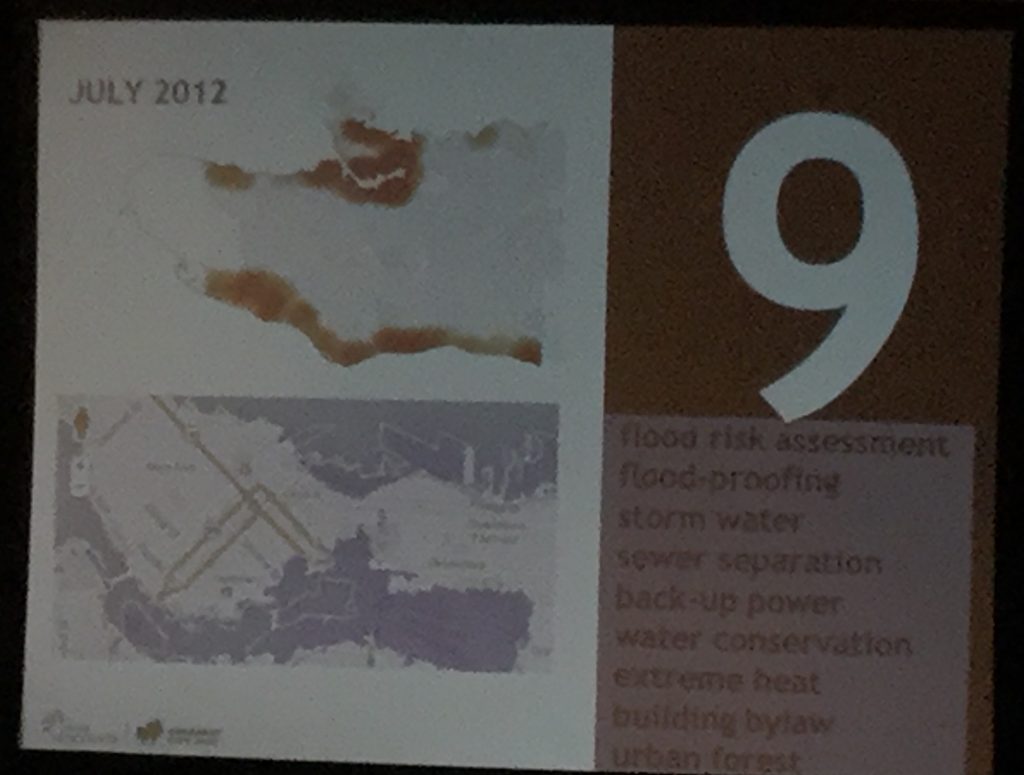

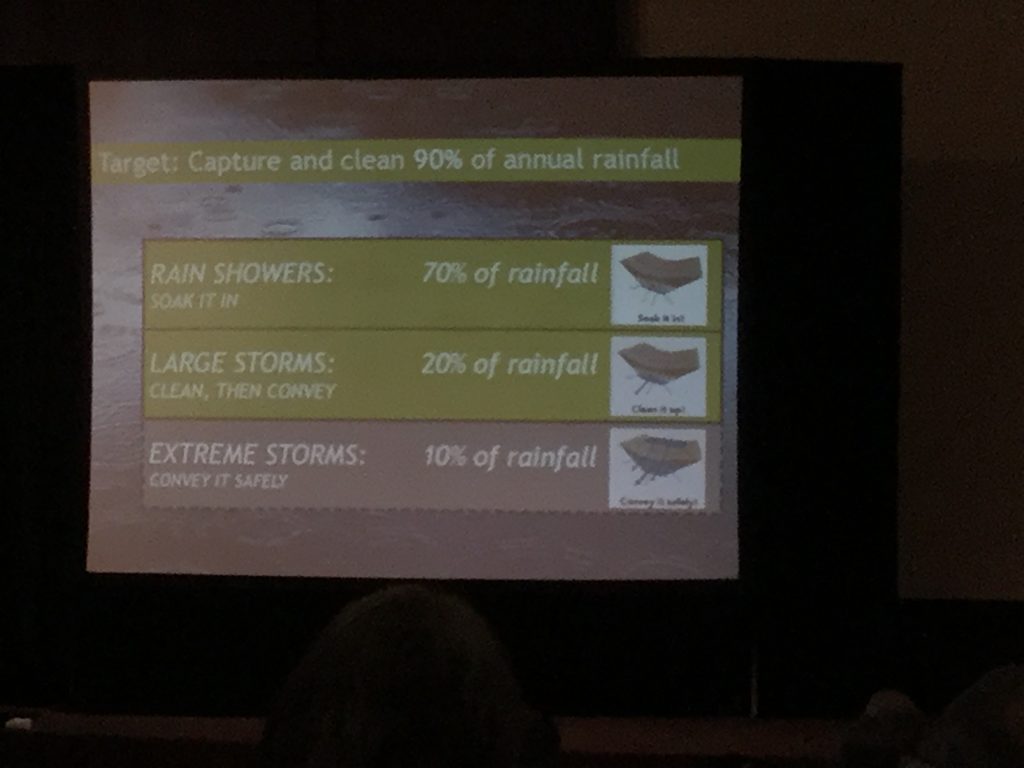
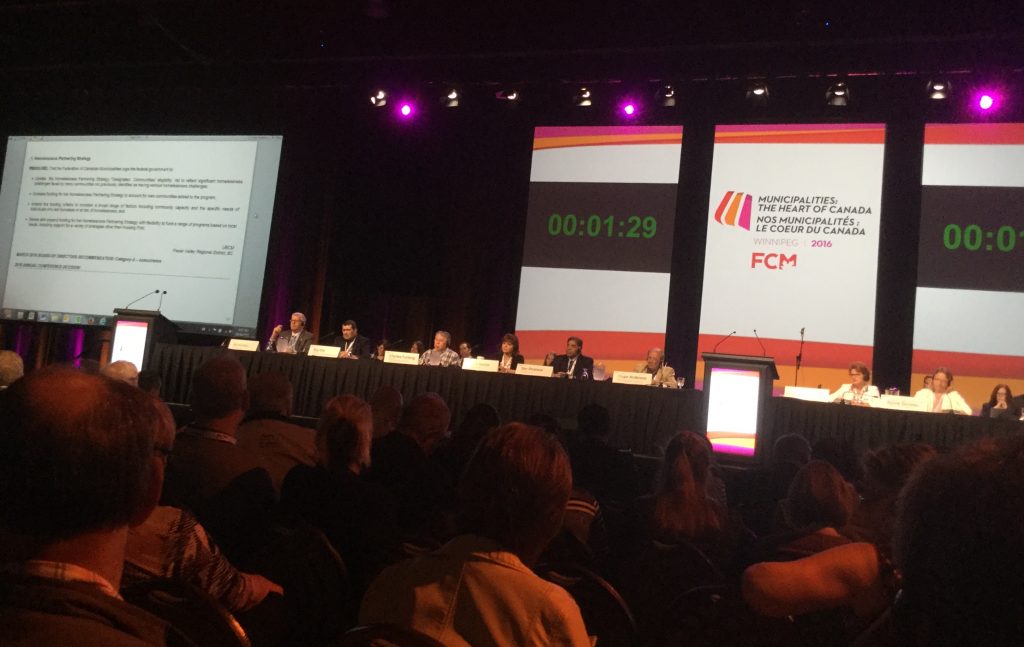

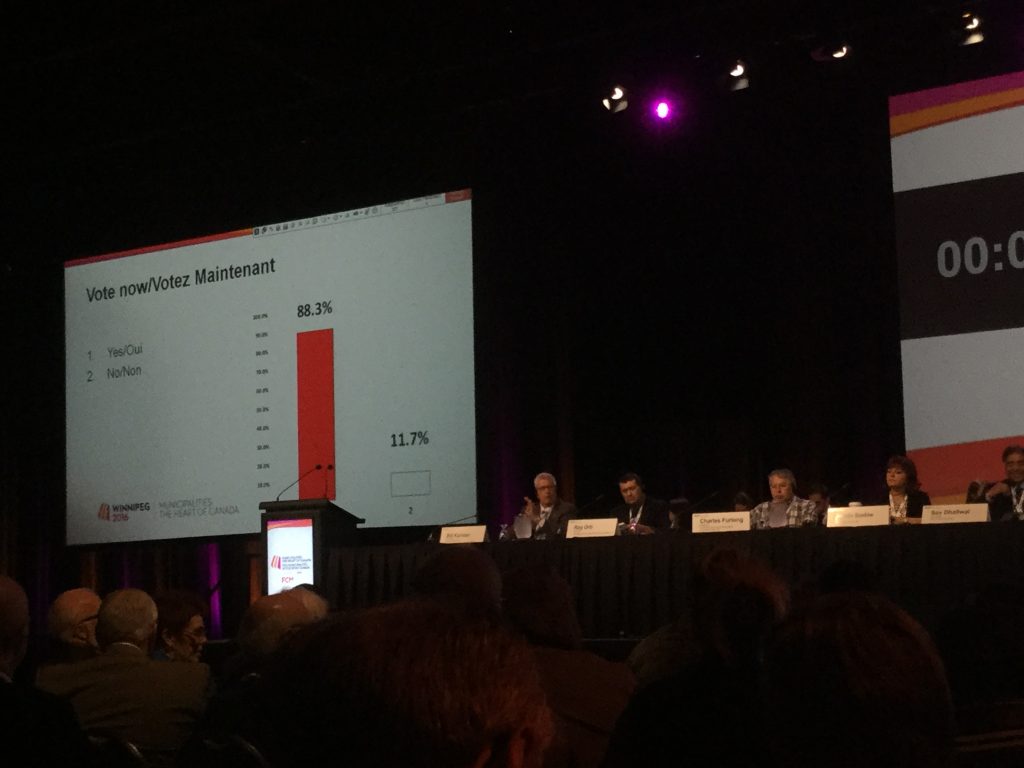
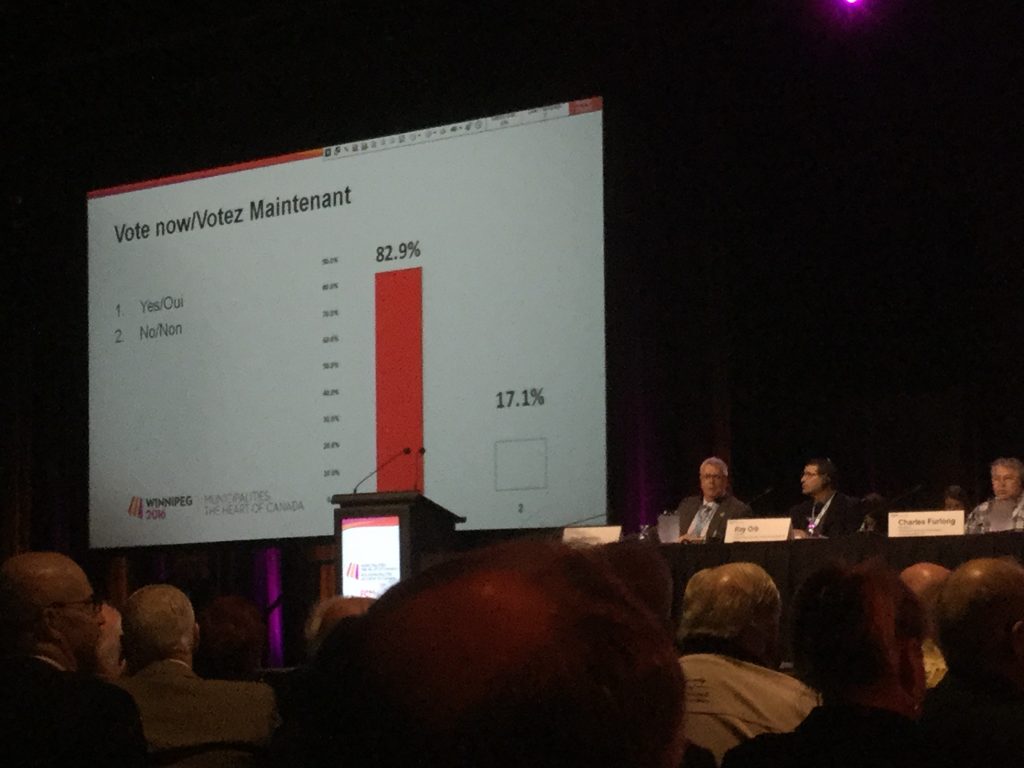
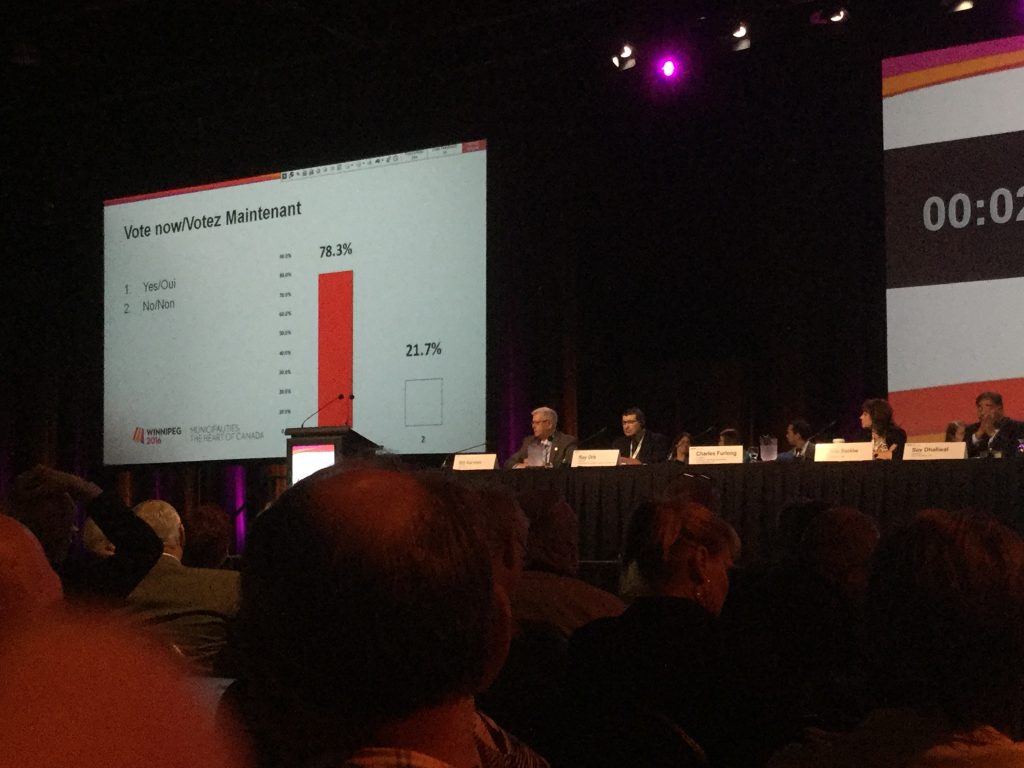
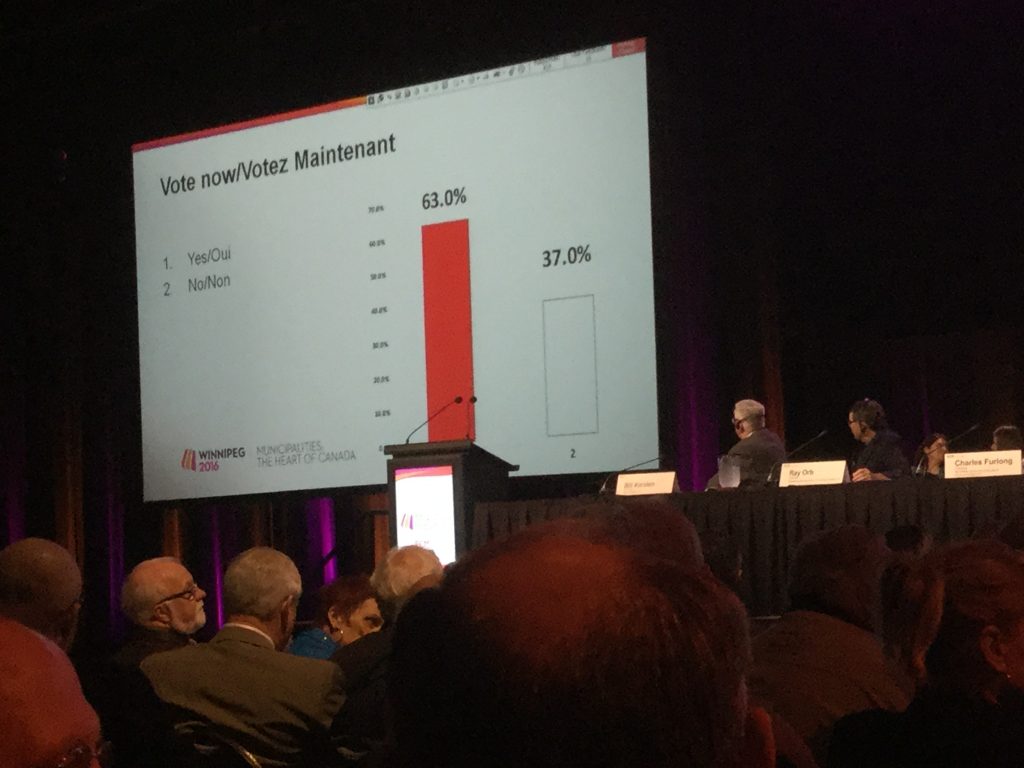
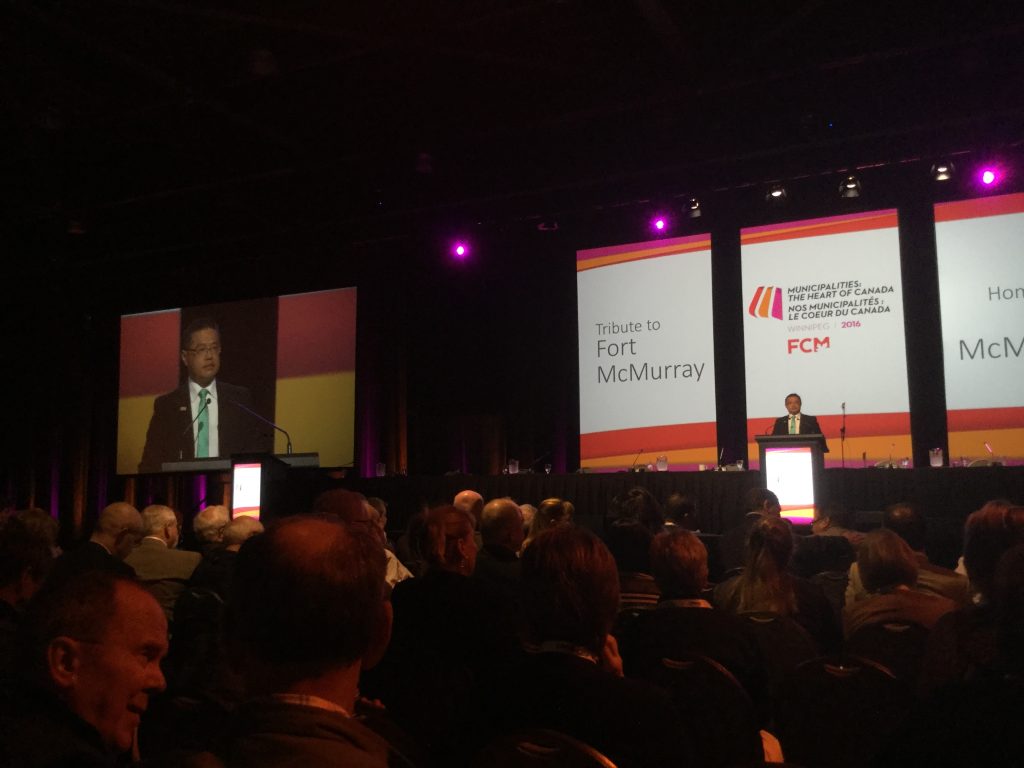
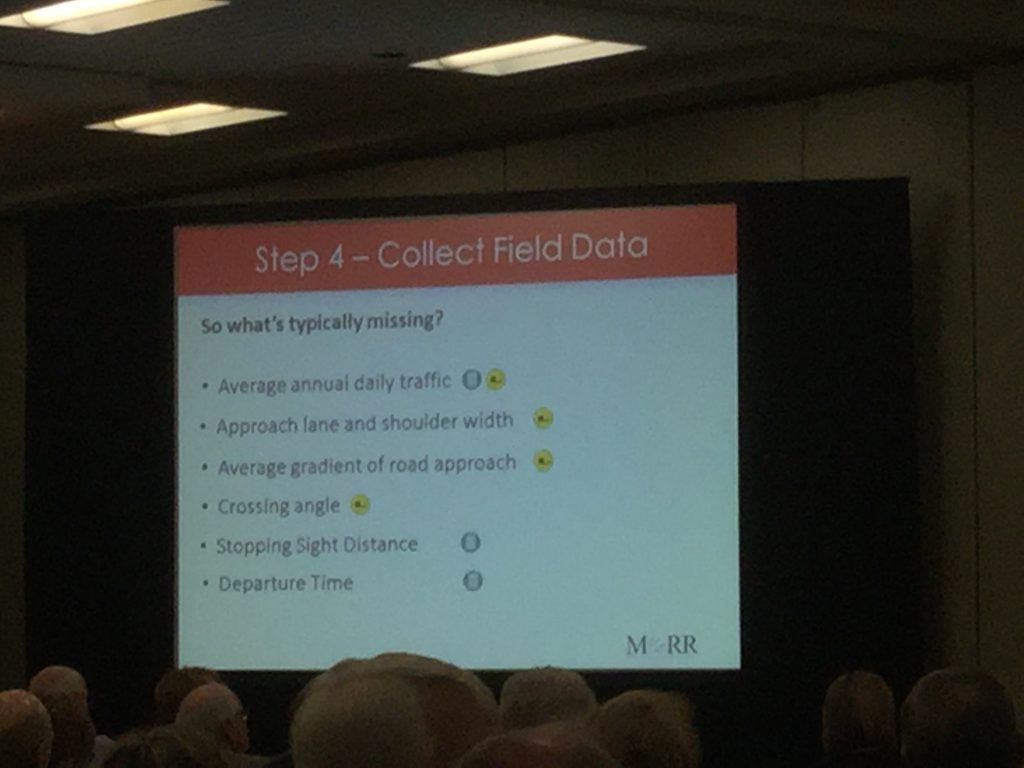
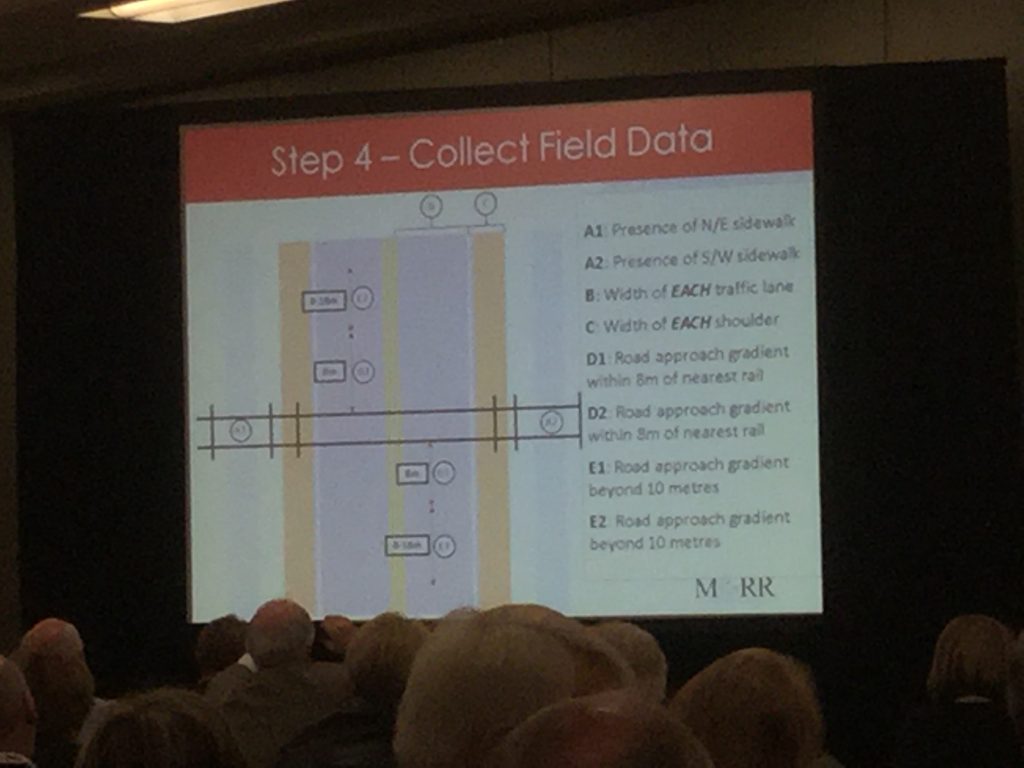
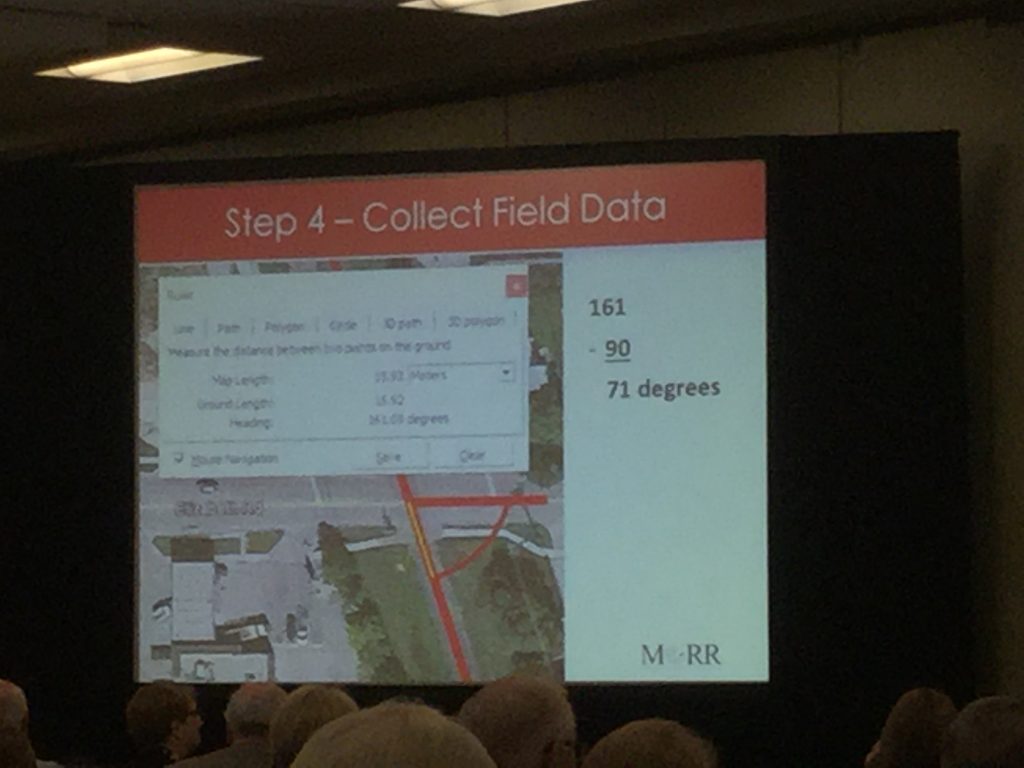
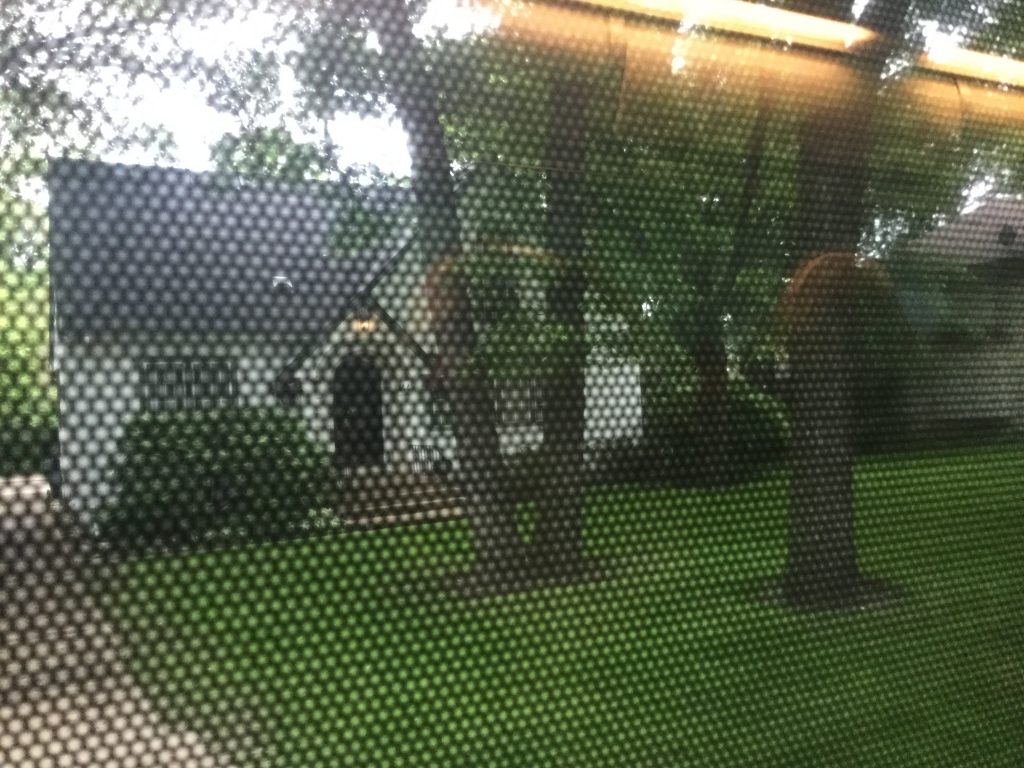
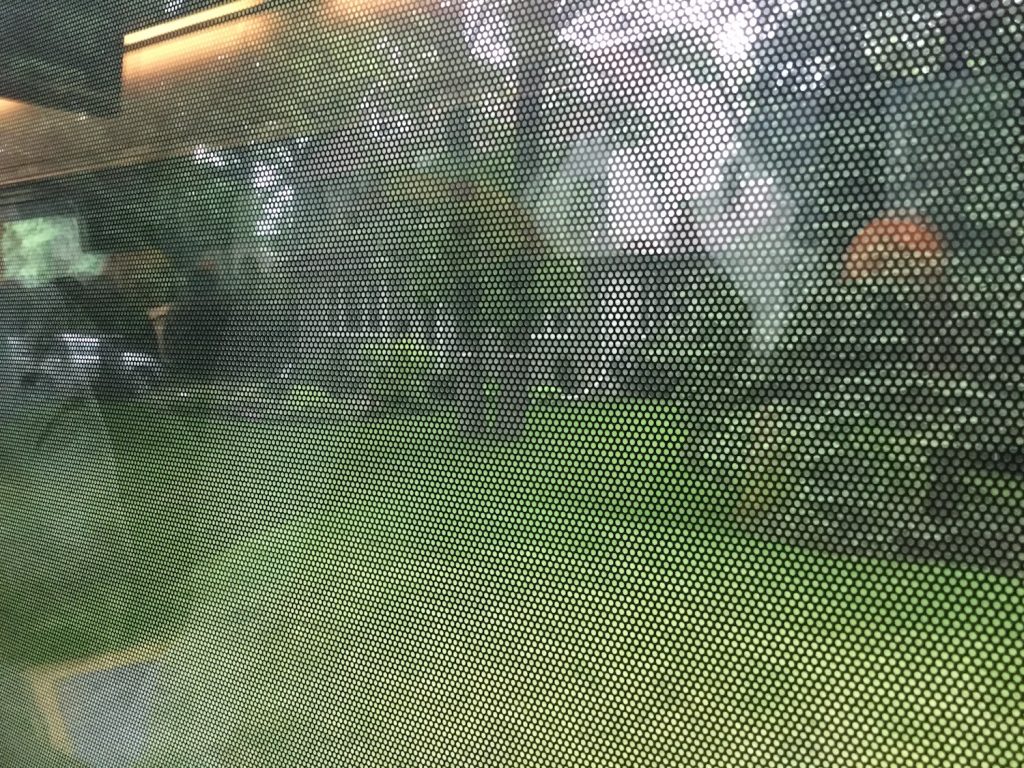
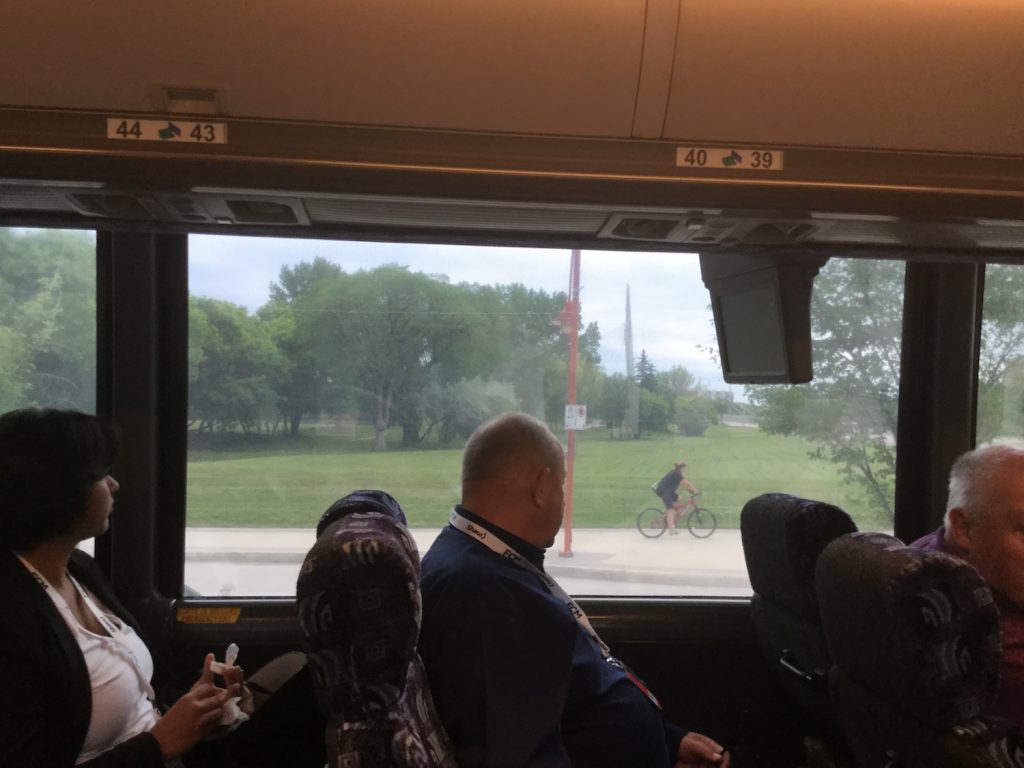

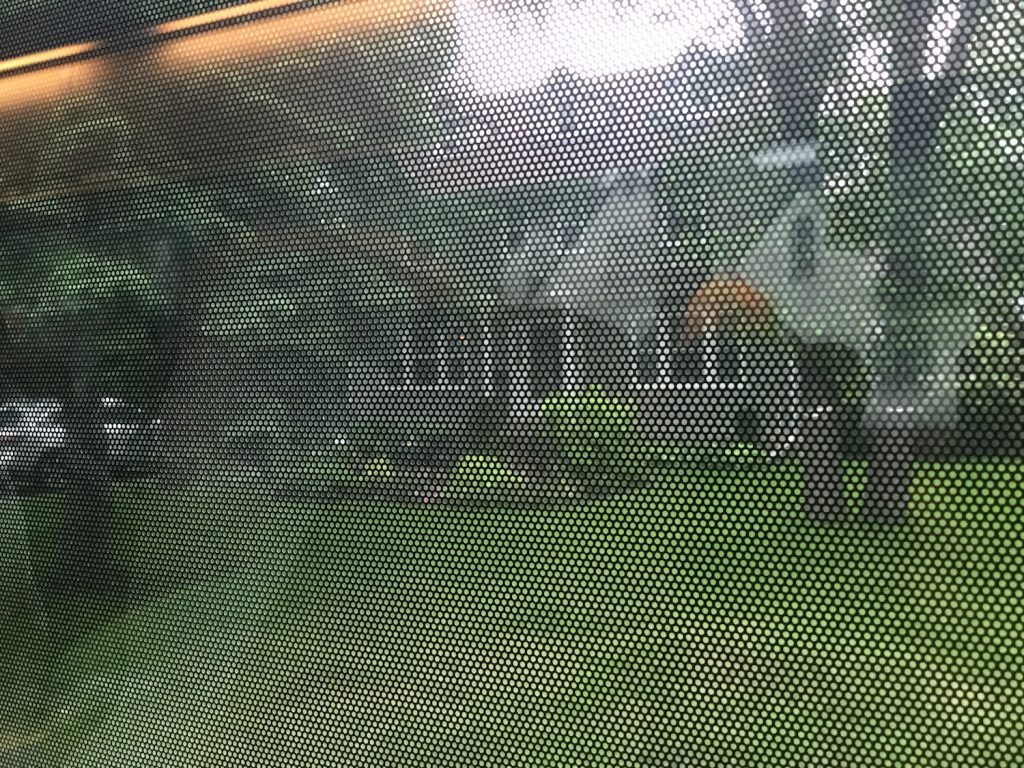

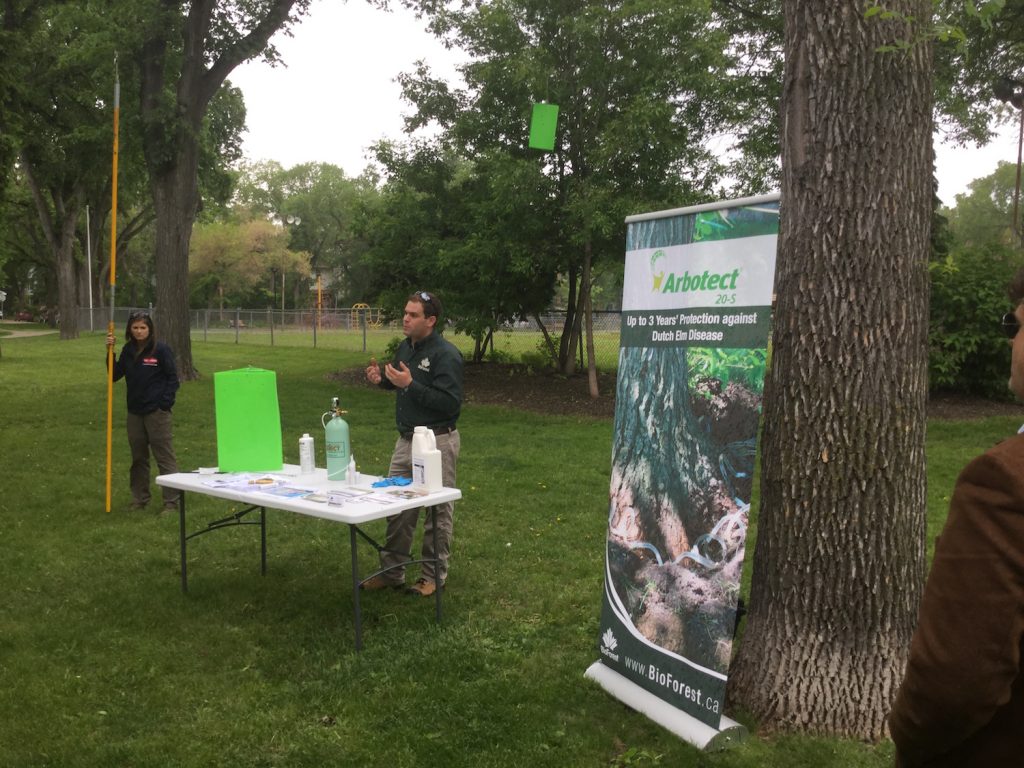
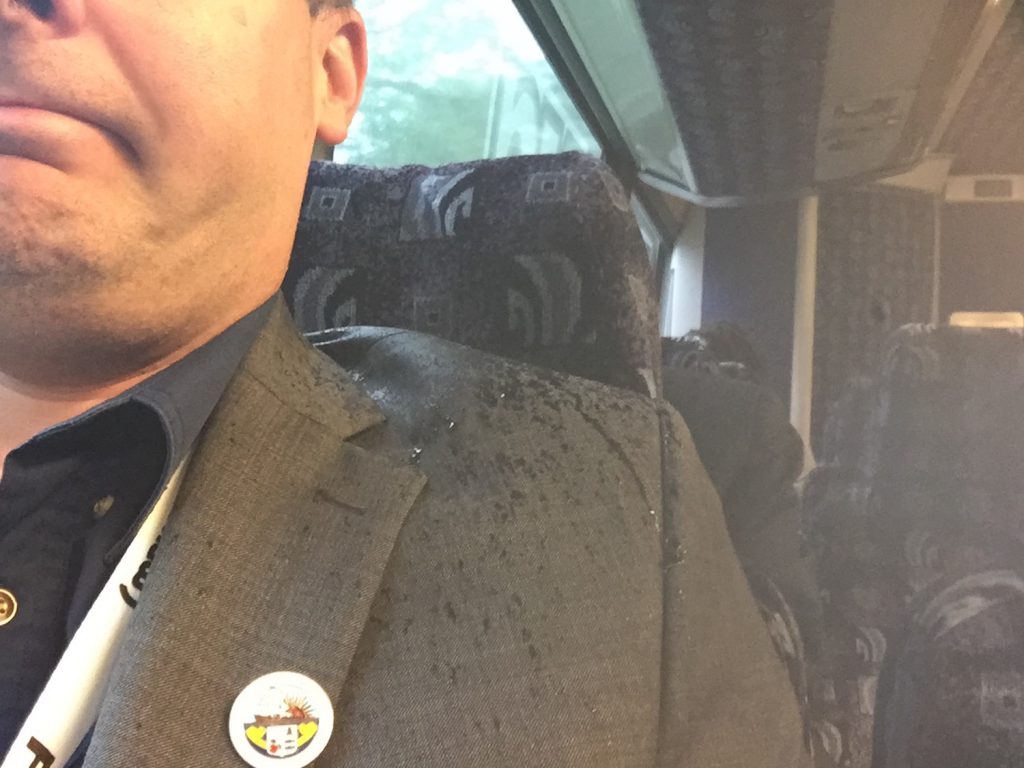


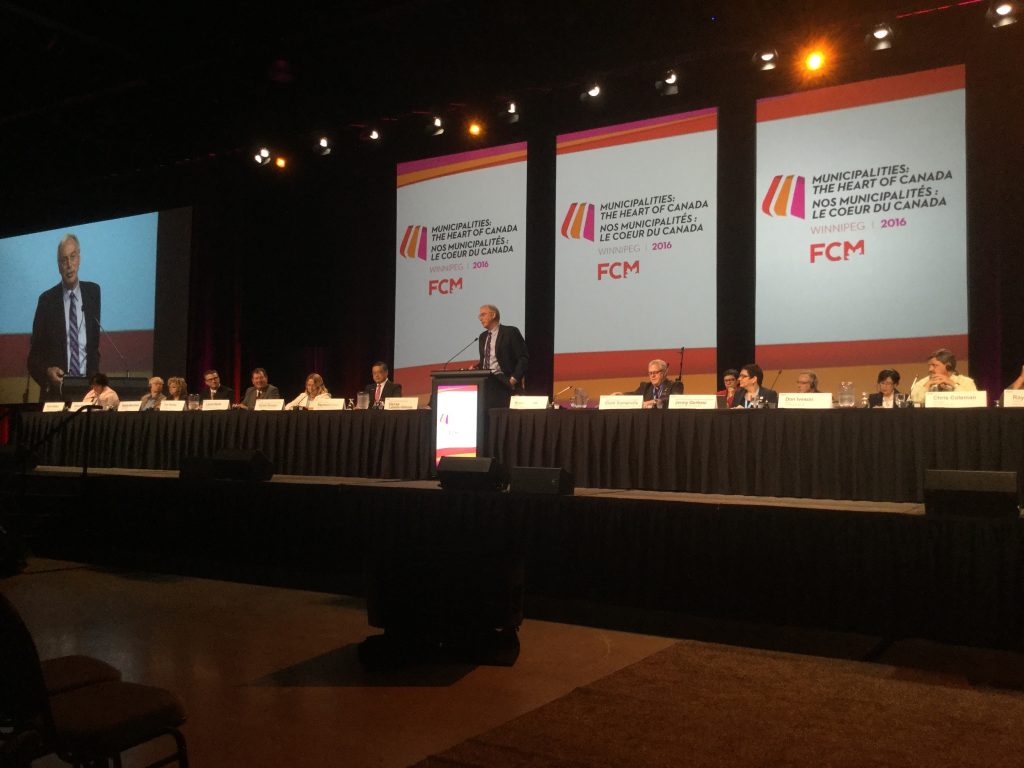
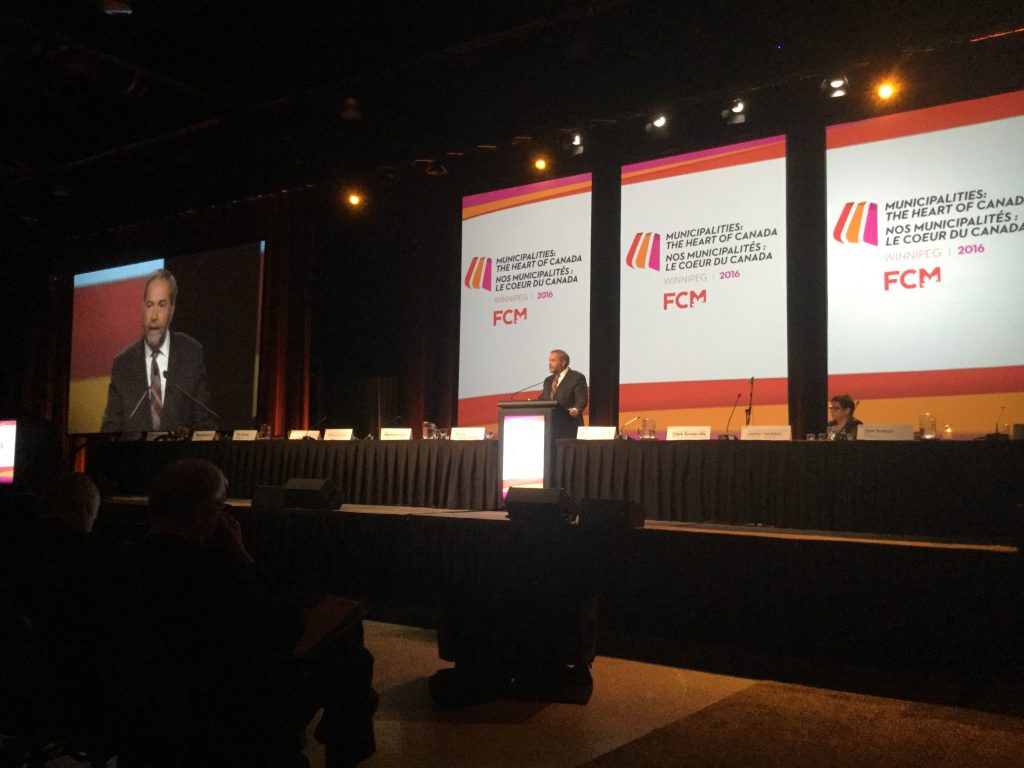
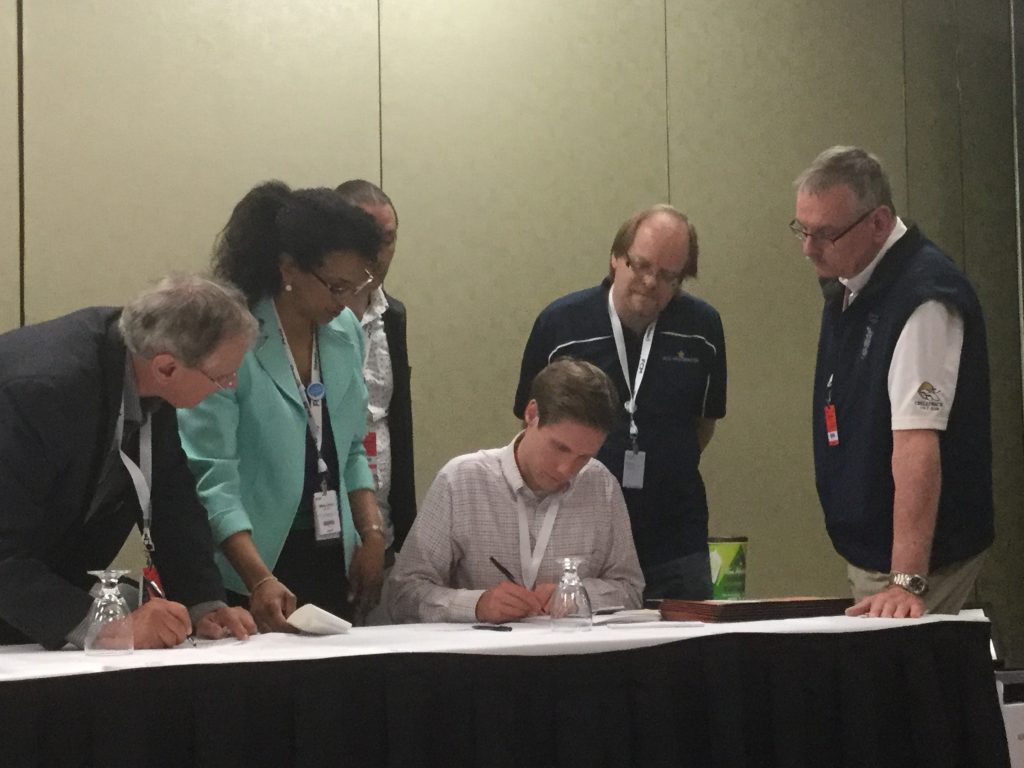
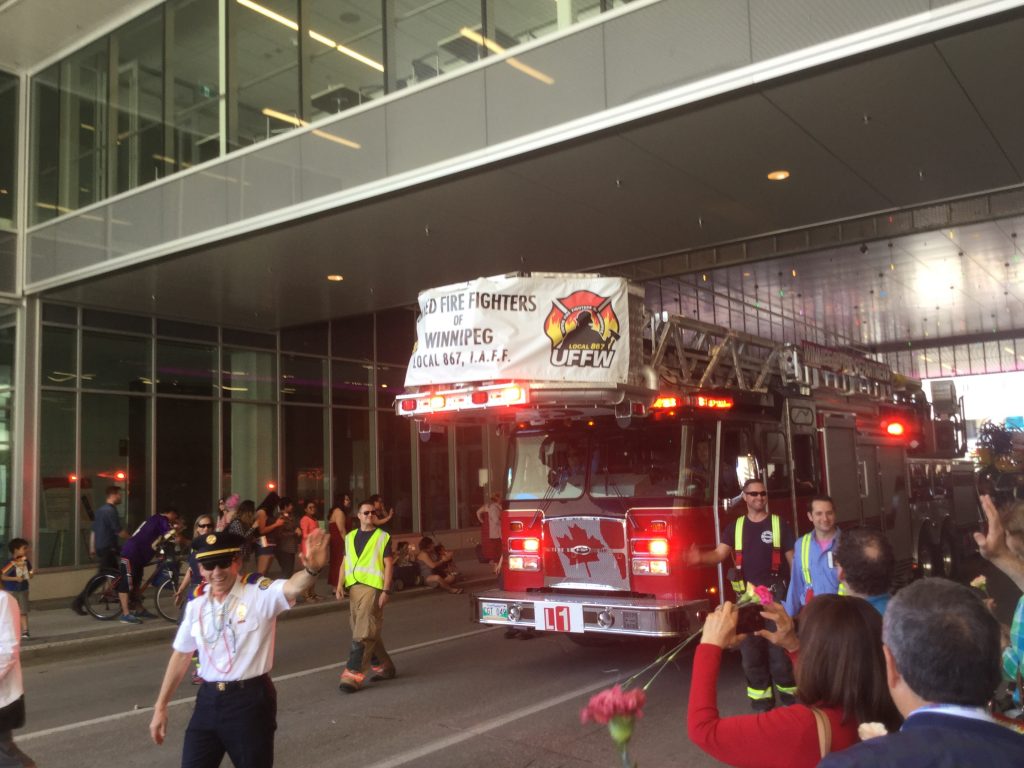
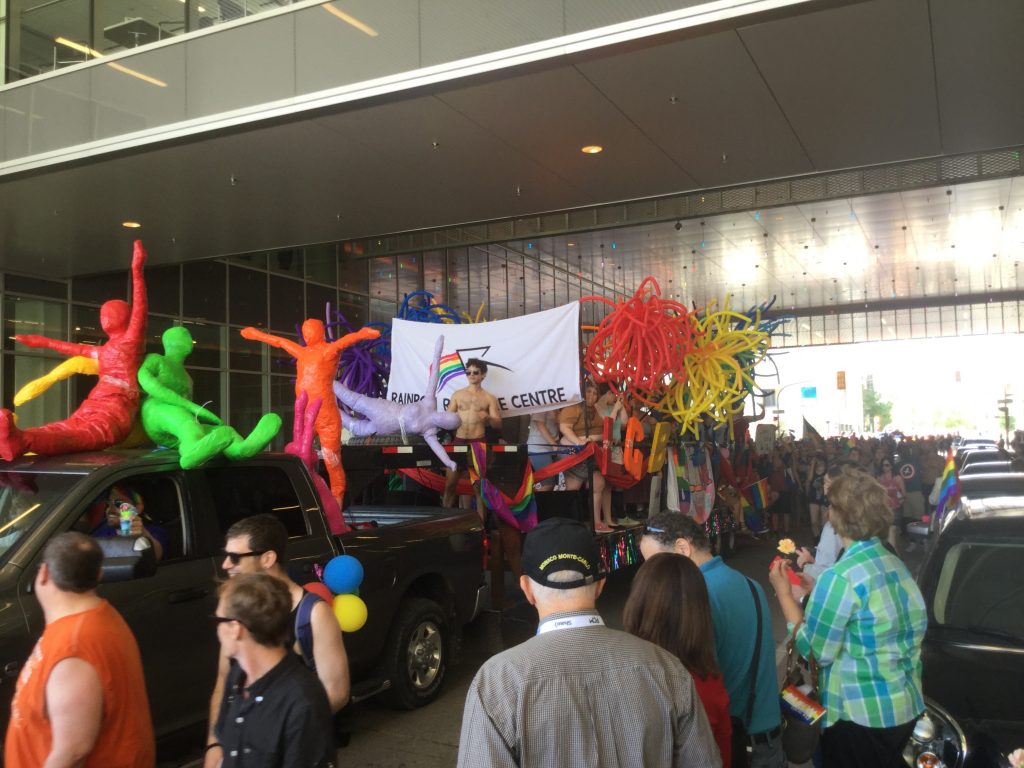
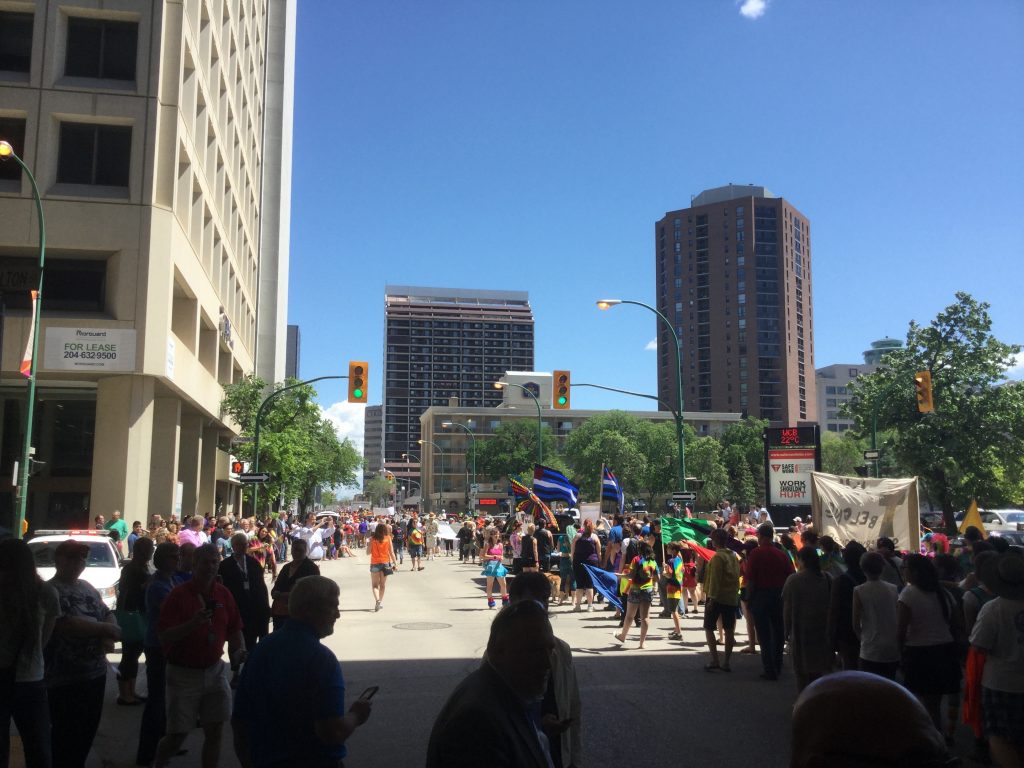
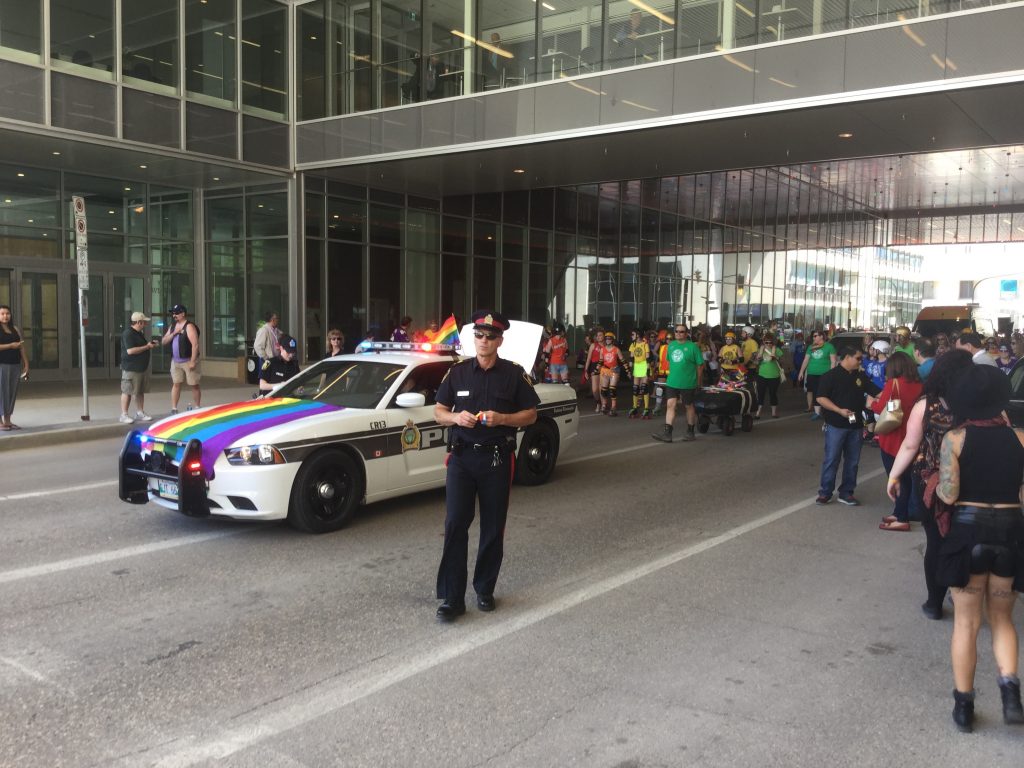
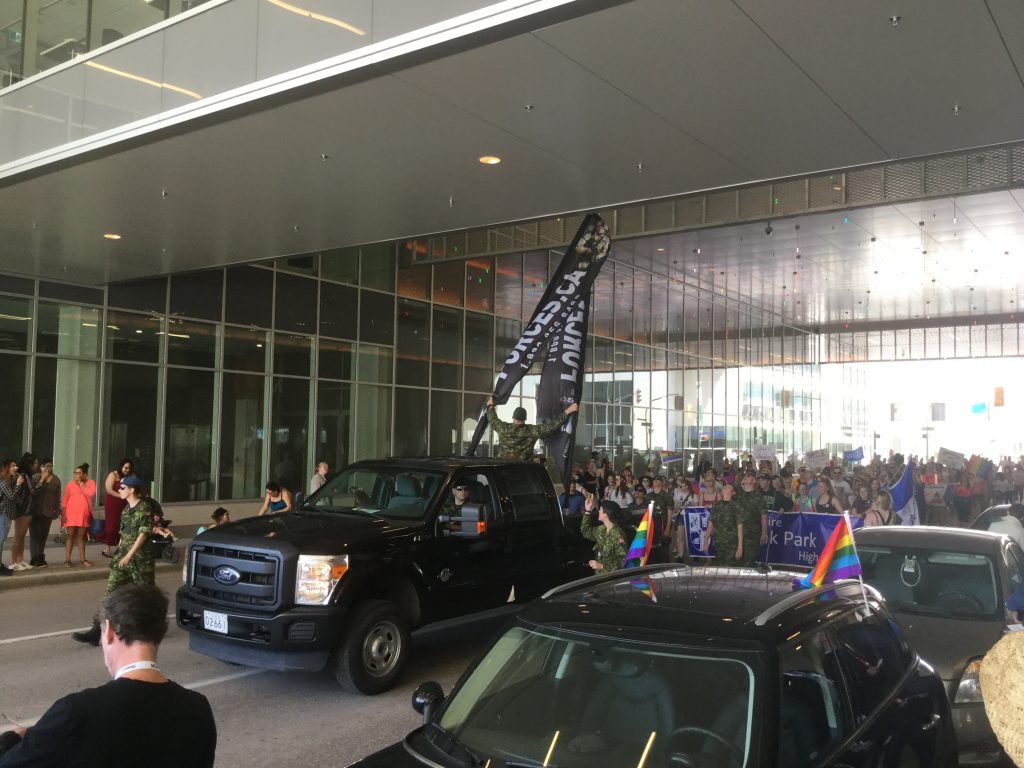
Dr. Patrick Moore has an environmental degree. So how is he fraudulent? Perhaps we should have him at the FCM as the keynote speaker next year and let the crowd decide. The hugh ice sheets melted 12,500 years ago rising the oceans 200 feet, long before industrialization.
Patrick Moore is a fraud and a liar and a paid shill for corporations. That’s what the organization he claims to have founded says.
http://www.greenpeace.org/usa/news/greenpeace-statement-on-patric/
I’ve debated with Dr. Moore at length on twitter. He uses the same tropes and lies that all climate anti-science activists use to diminish the indisputable scientific facts around climate and humanity’s respomsibility.
The fact that ice sheets came and went in ages past is exactly how we know what we are doing now will cause similar massive change. Simple physics says adding CO2 to the atmosphere will heat it. We have been able to measure that basic chemical/physical property since the 1800s. (Joseph Fourier/Svend Arrhenius). We also know from ice records and other long term geologic and proxy records that it only took a change of 1°C to go from glaciation to warm and back again.
Normally, and we see it through the geologic record. those changes occur in periods of 10s of 1000s of years. Now we are seeing a change of temperature occuring in just 100 years. There is no force exerted on the planet other than the burning of fossil fuels and release of CO2 that could have raised our temperature already by nearly 1°C, the same as the change that caused/ended the ice age.
Science tells us our current emission targets and reductions will still raise the average temperature of the earth by more than 2.5°C. Science is telling us that that is dangerous for our species. Even a rise of 1.5°C will probably mean low lying countries like Tuvalu will be swallowed by the sea.
That is why it is imperative that we stop adding more CO2 to the atmosphere than it can absorb. (We can add some particularly if we reforest areas that have been deforested, but only a fraction of what we as a planet are emitting today).
Thanks for replying Joe, all the best in Stettler.
Cheers,
Chris